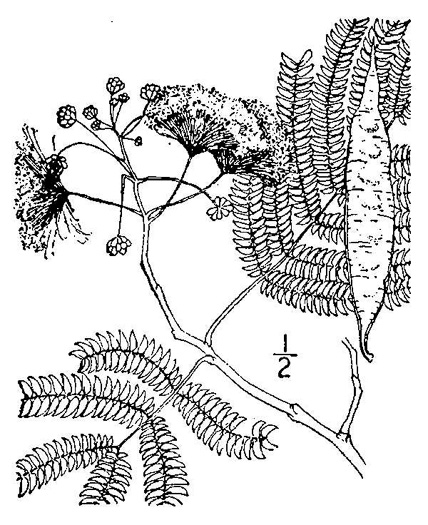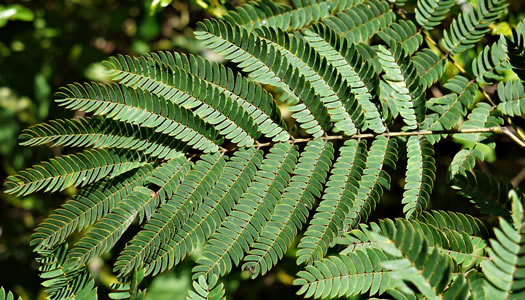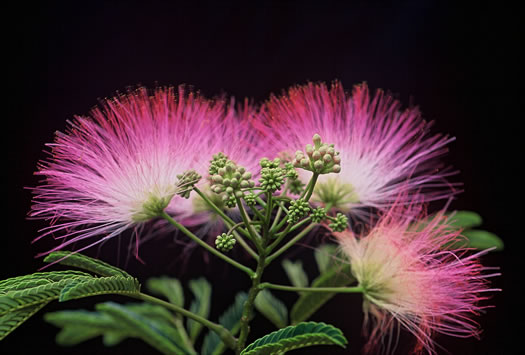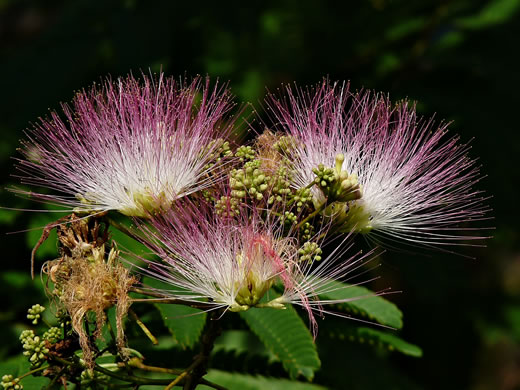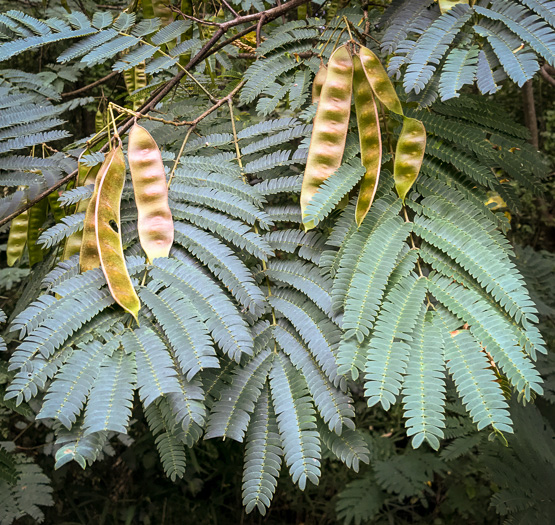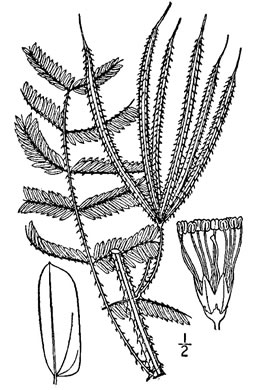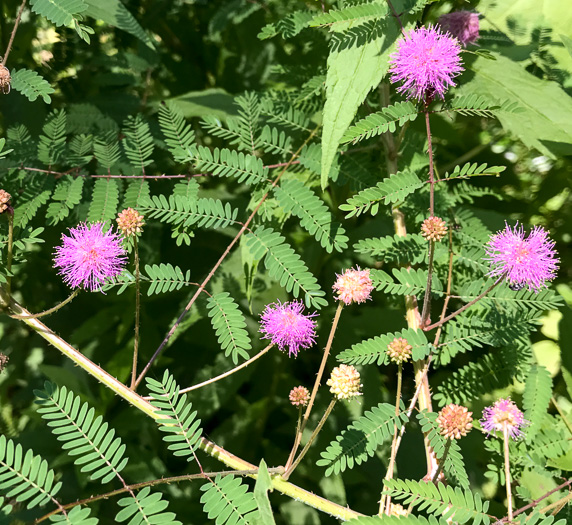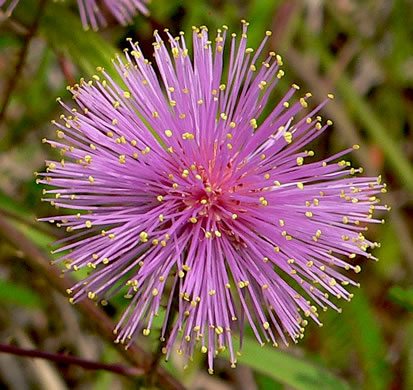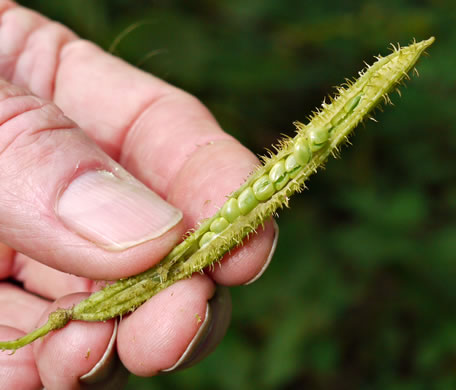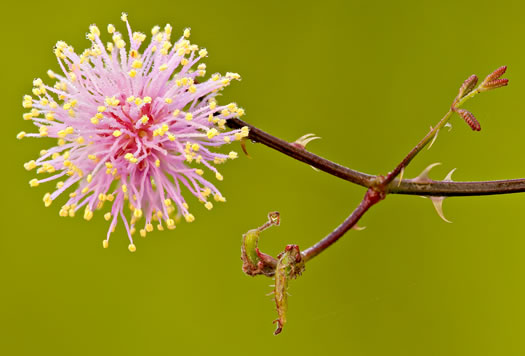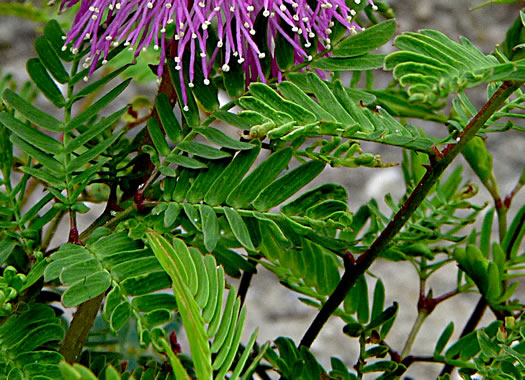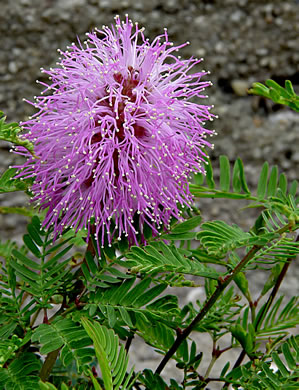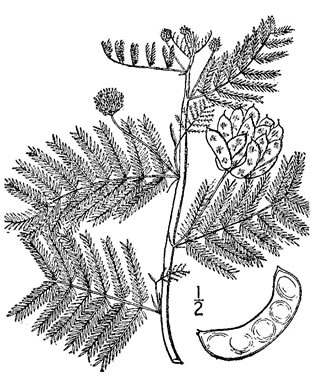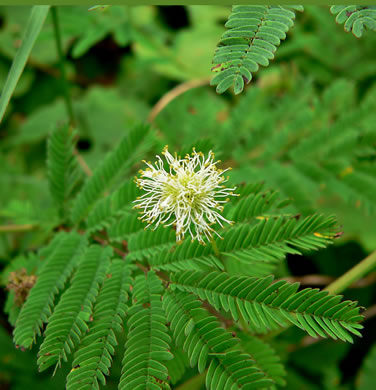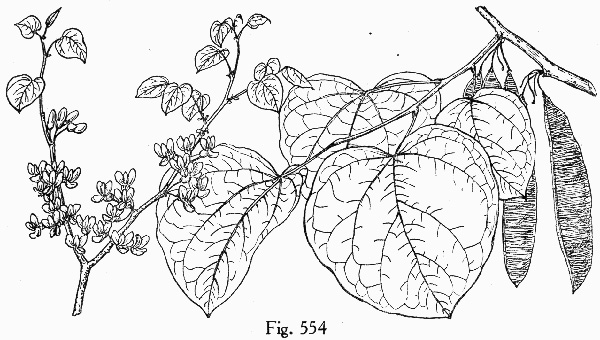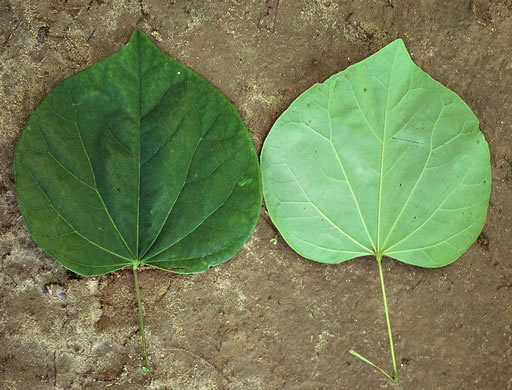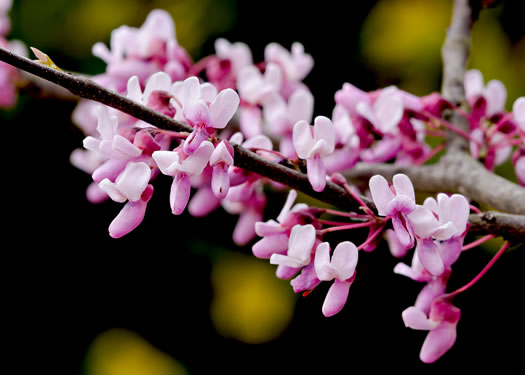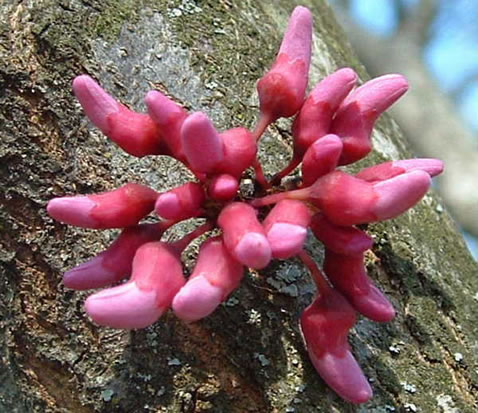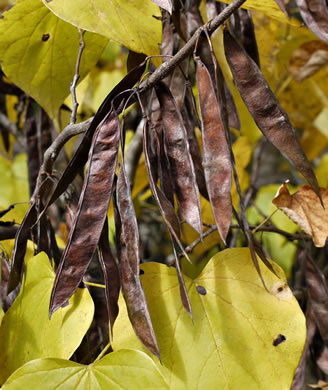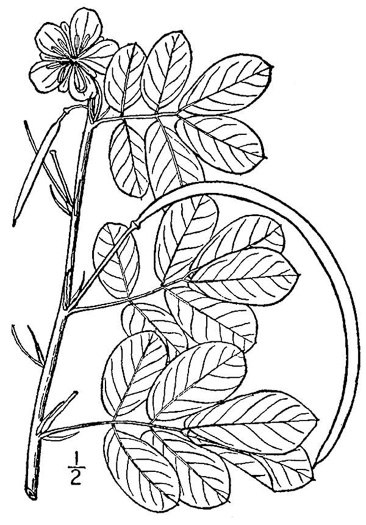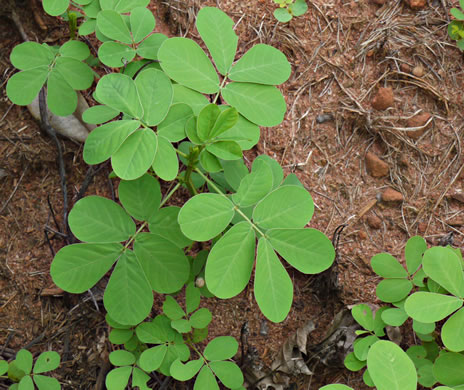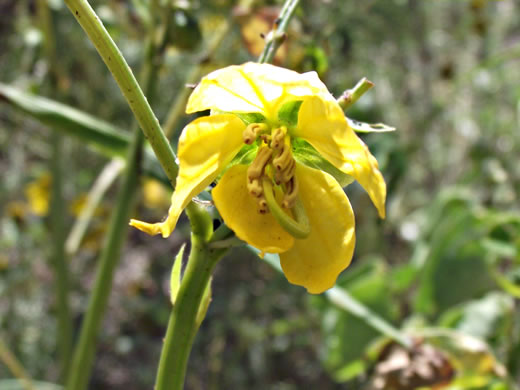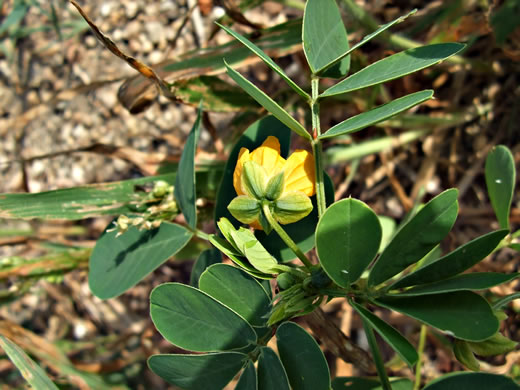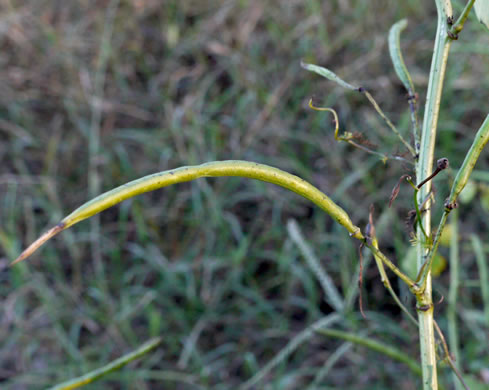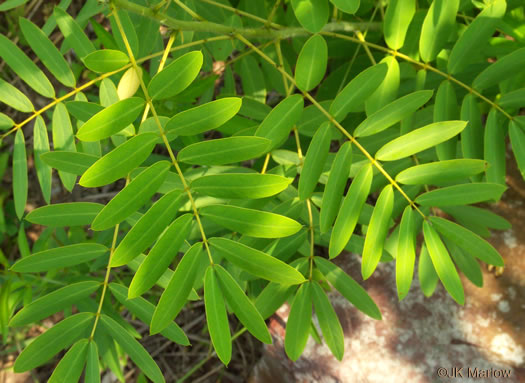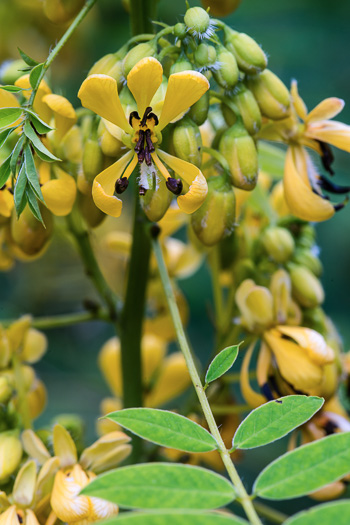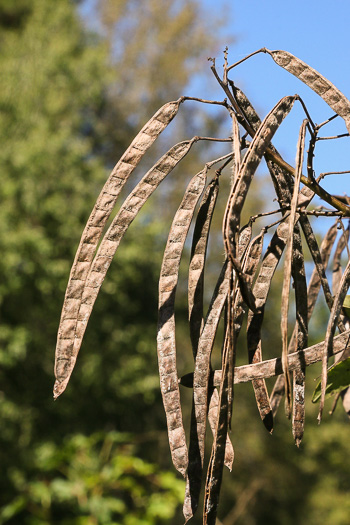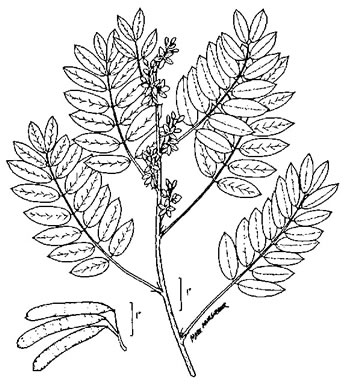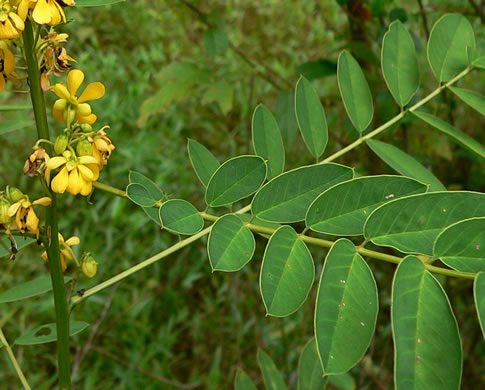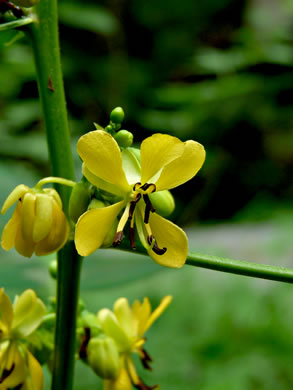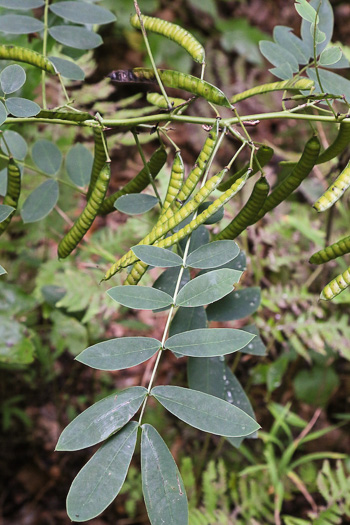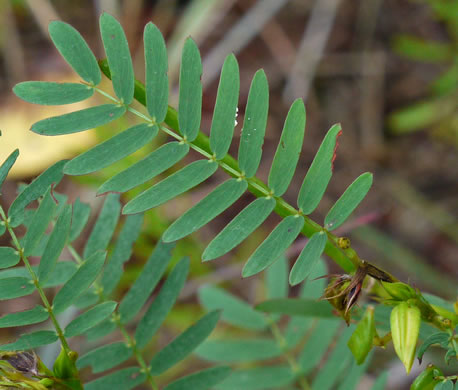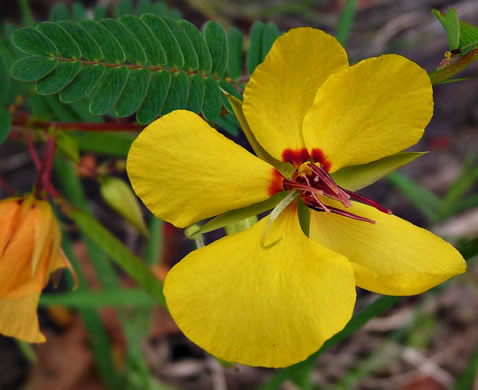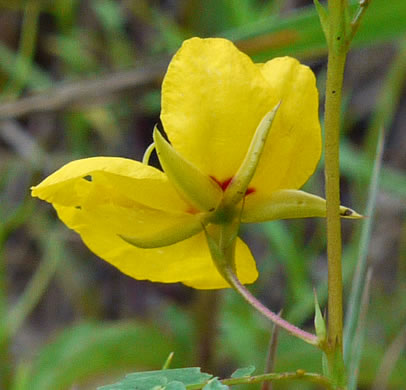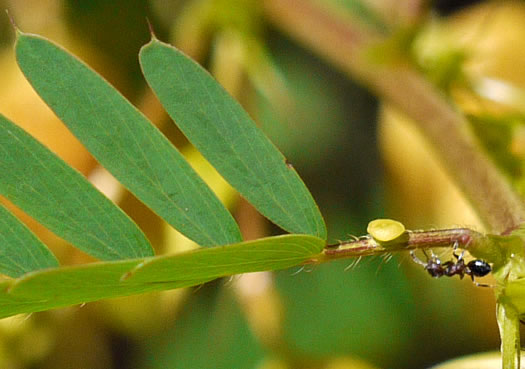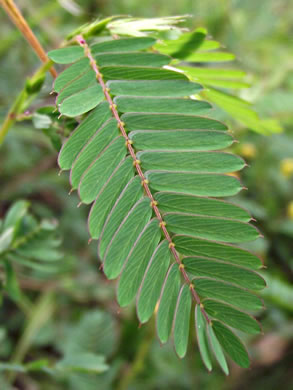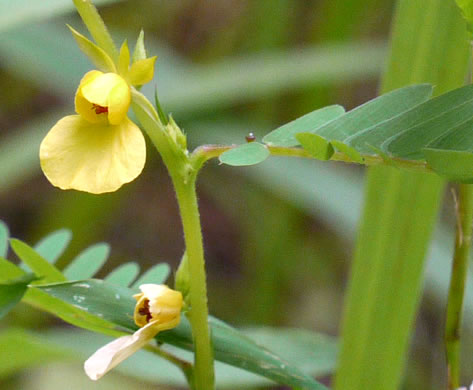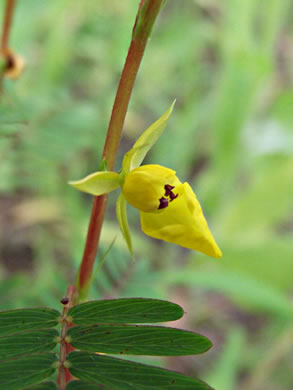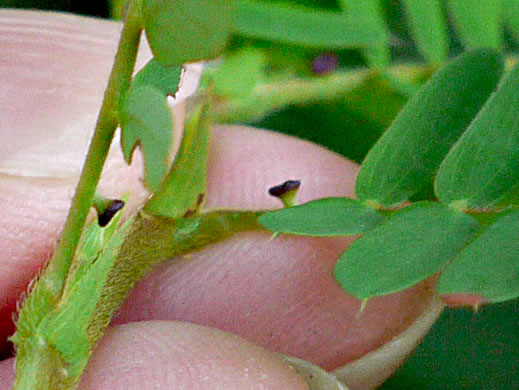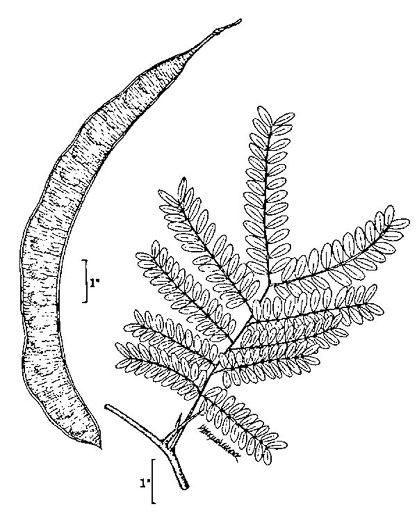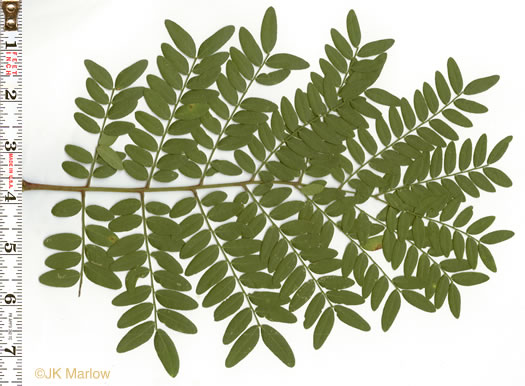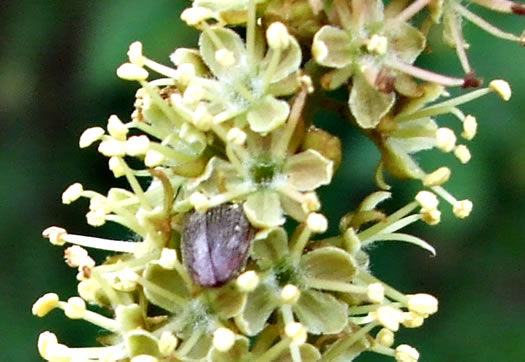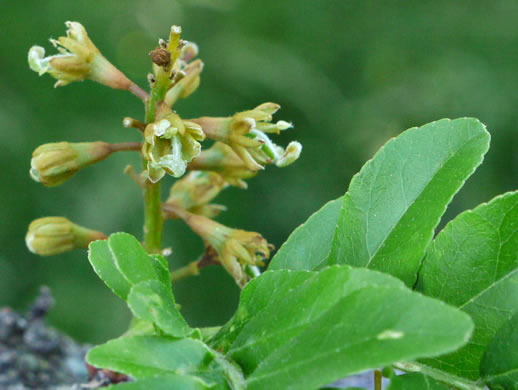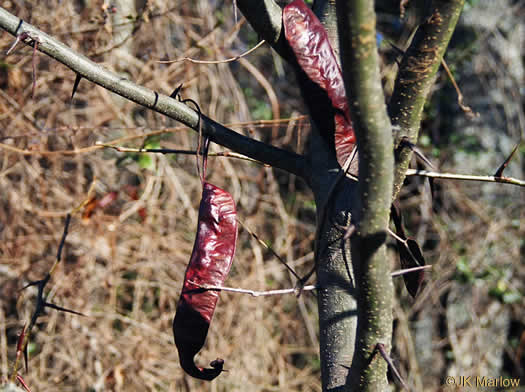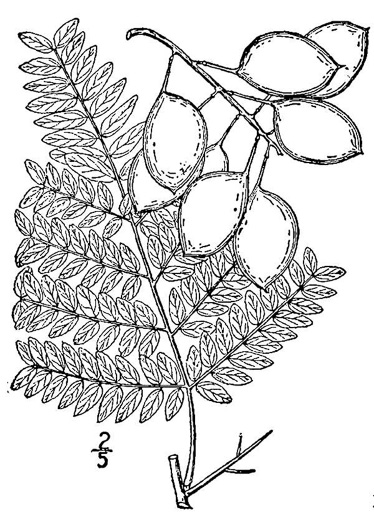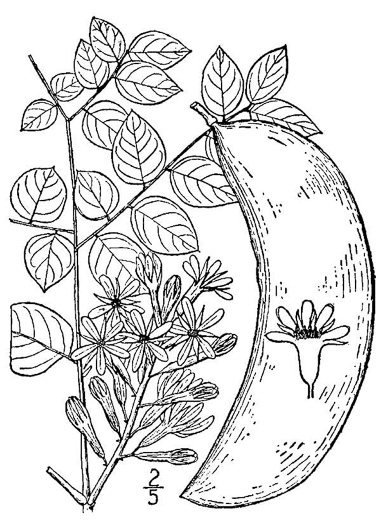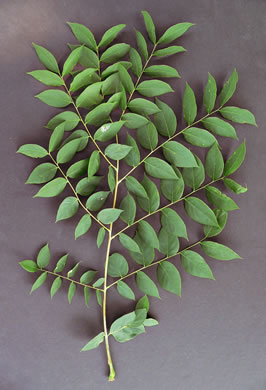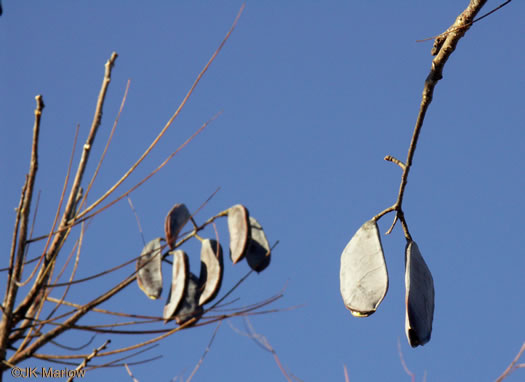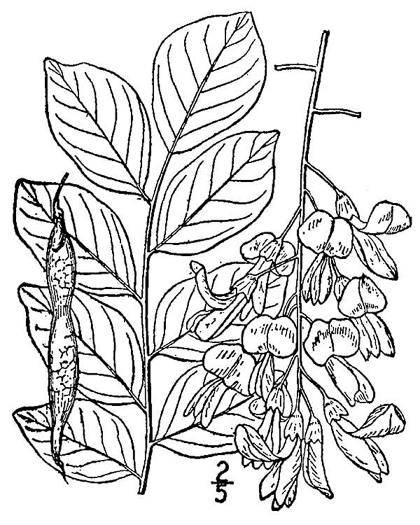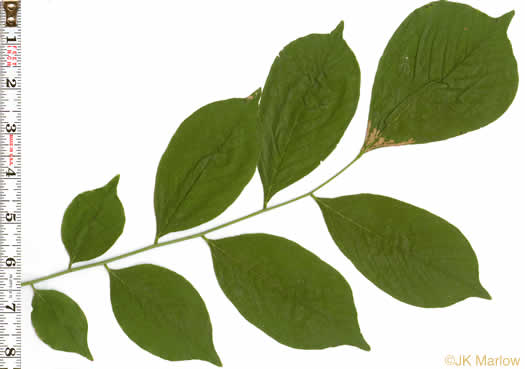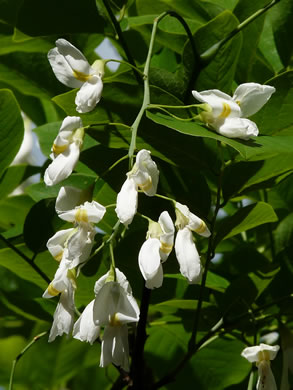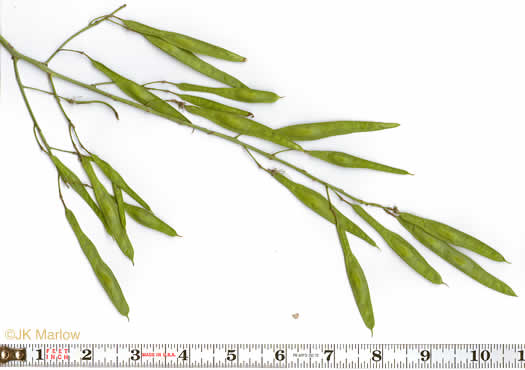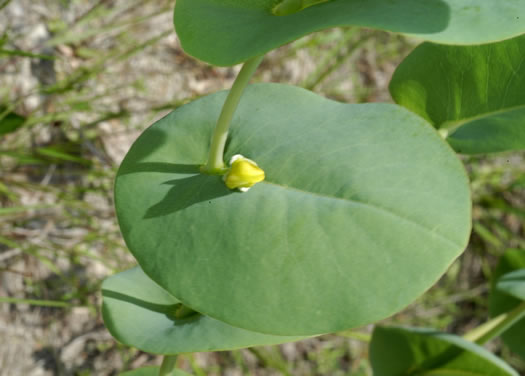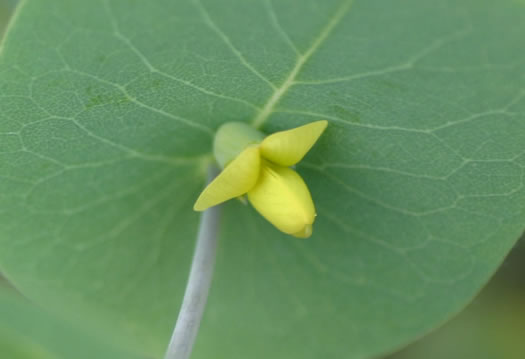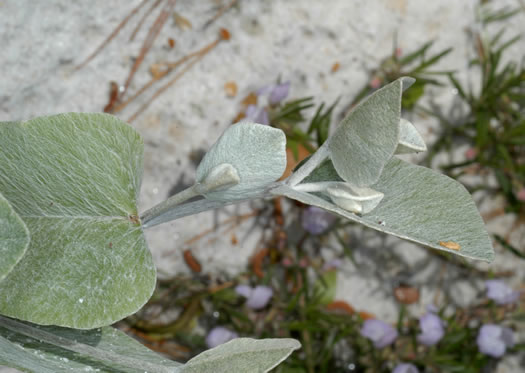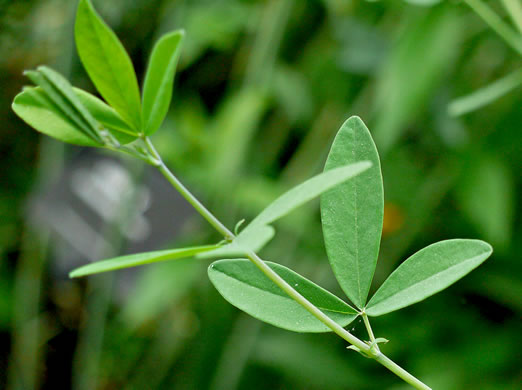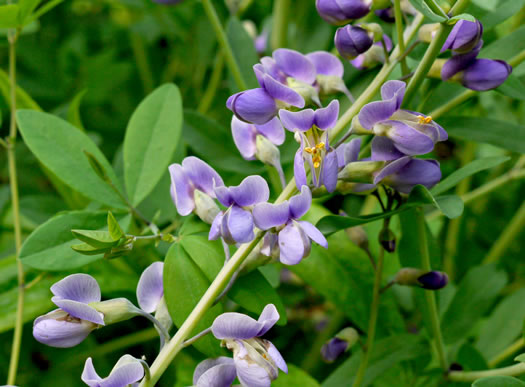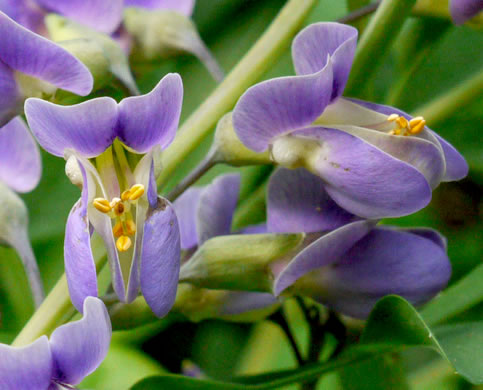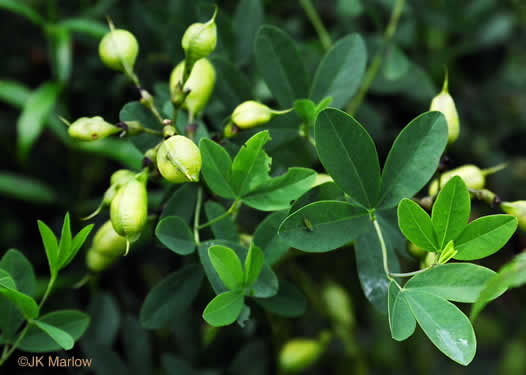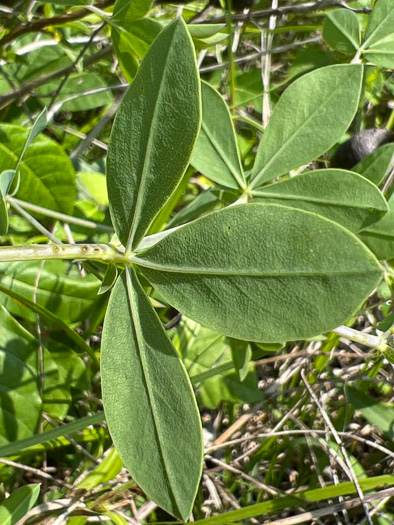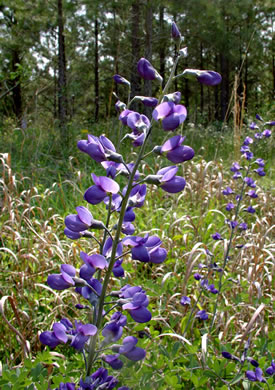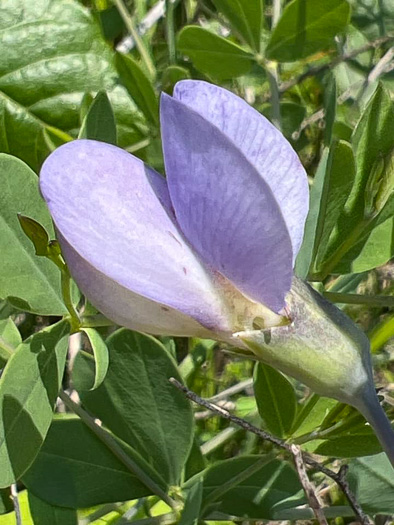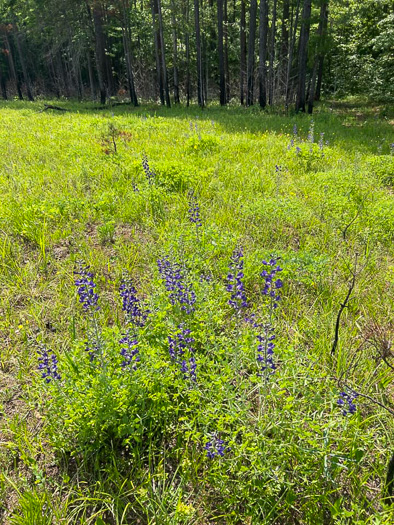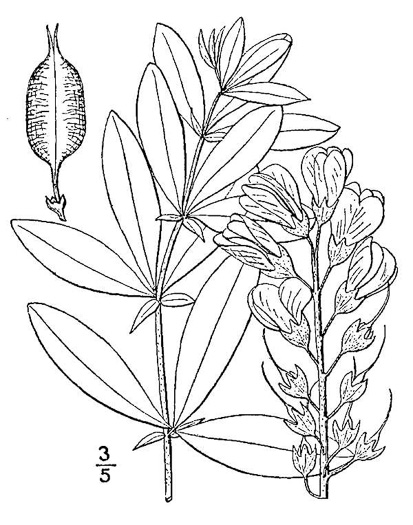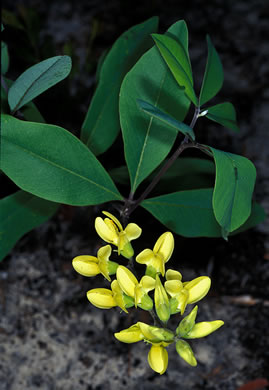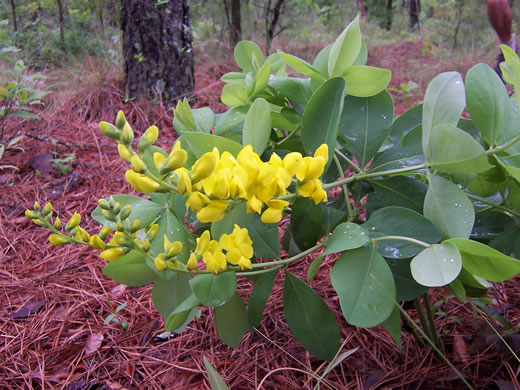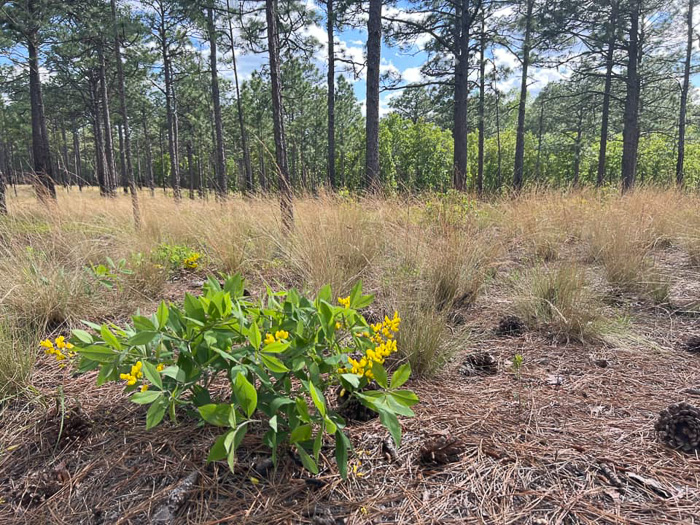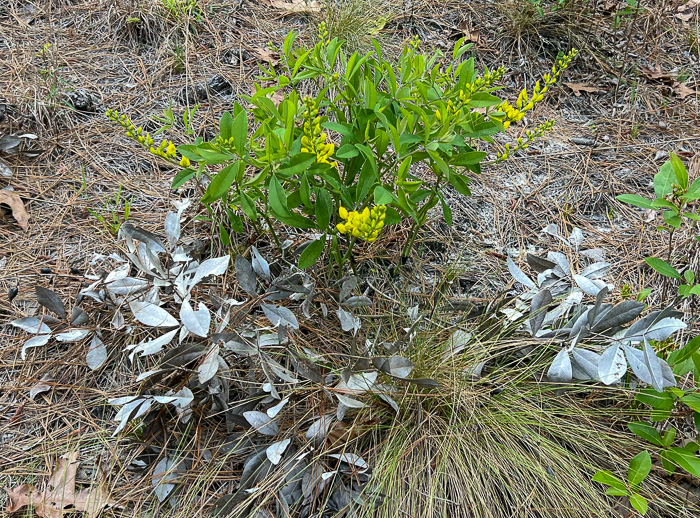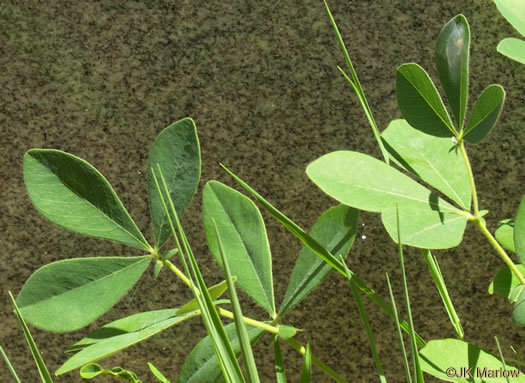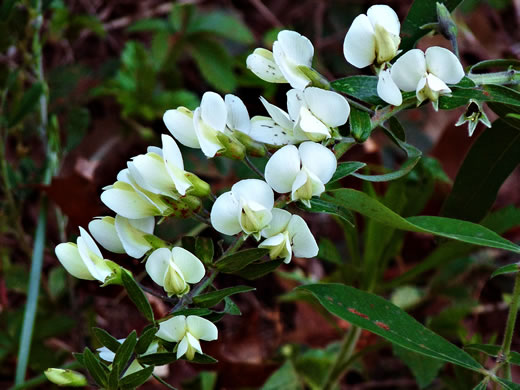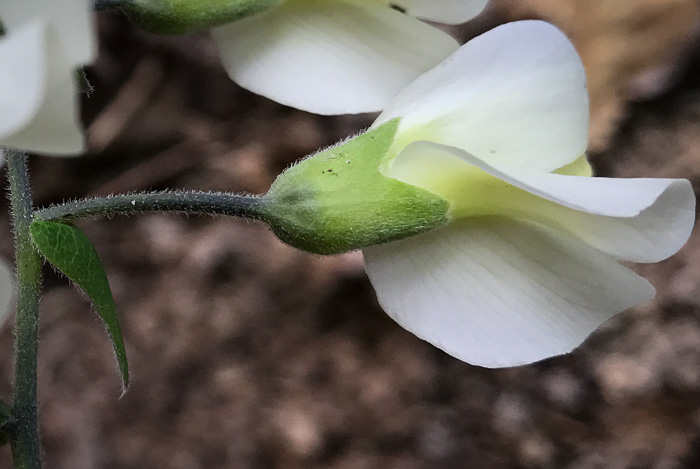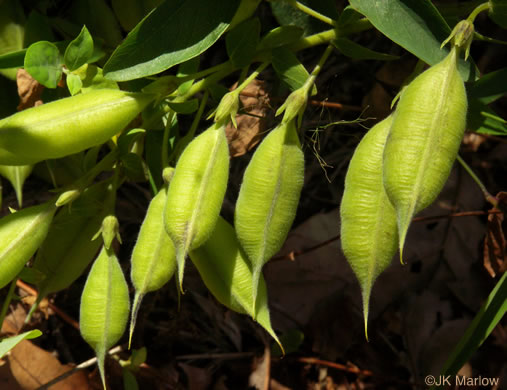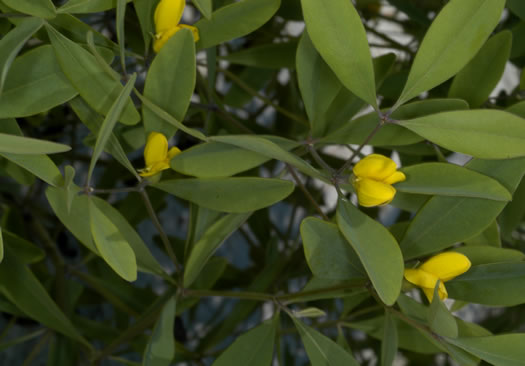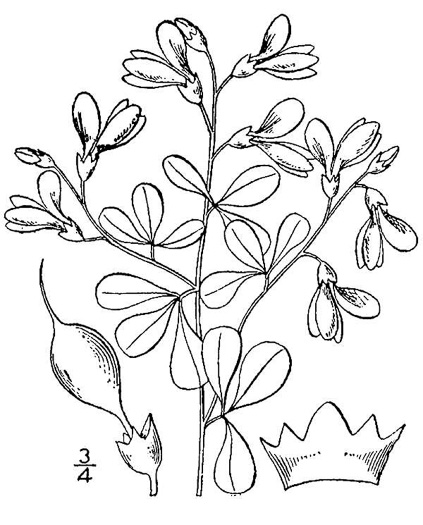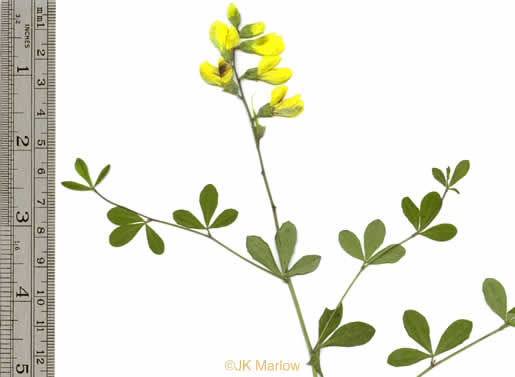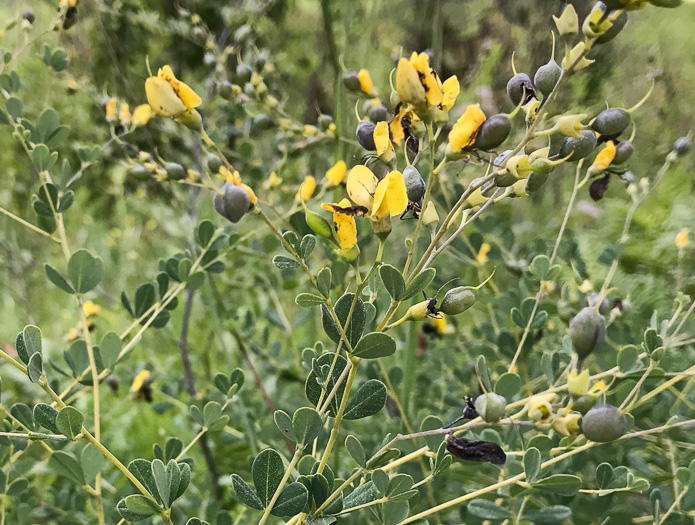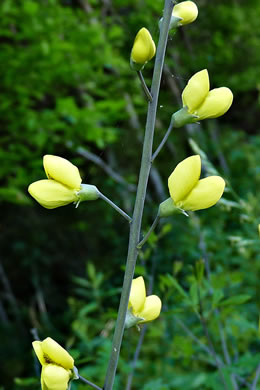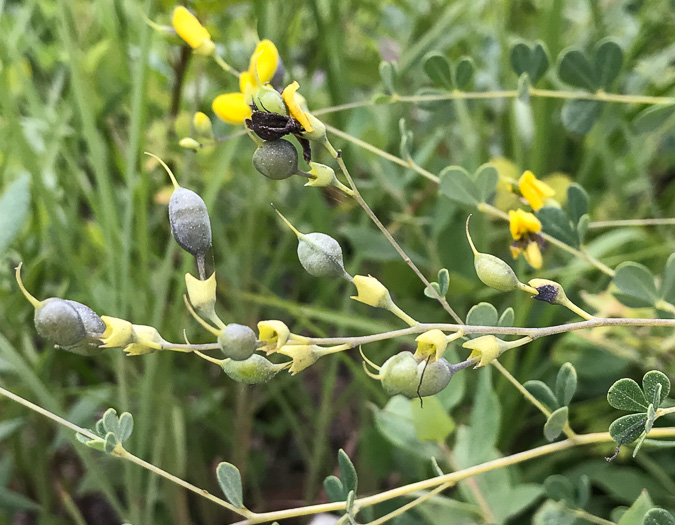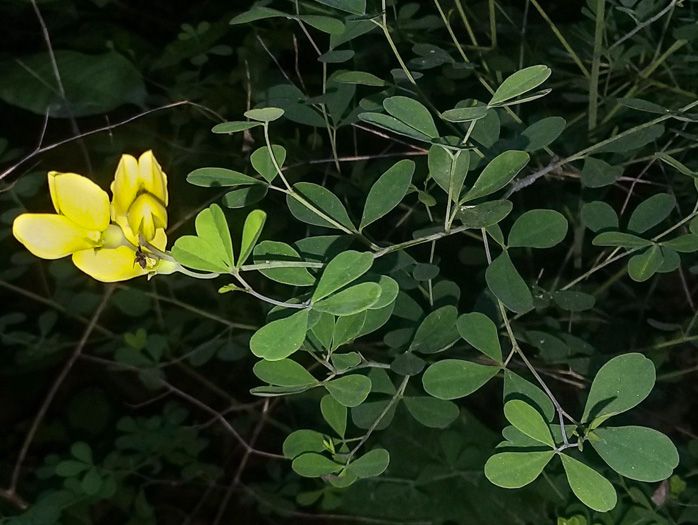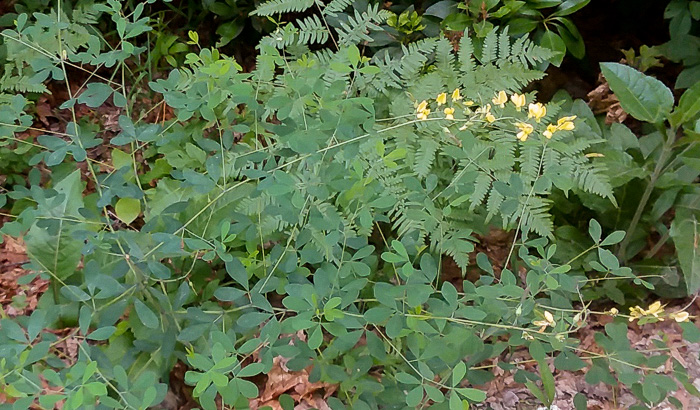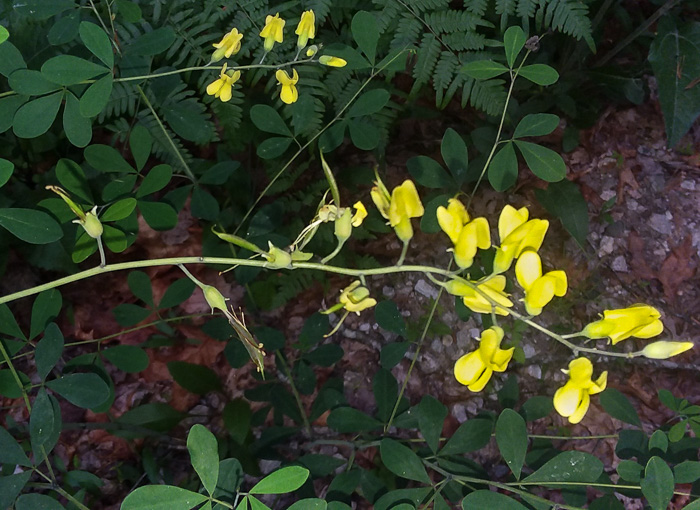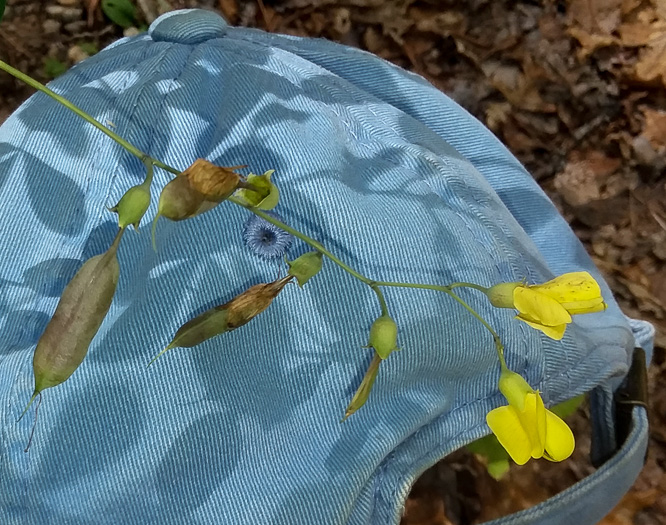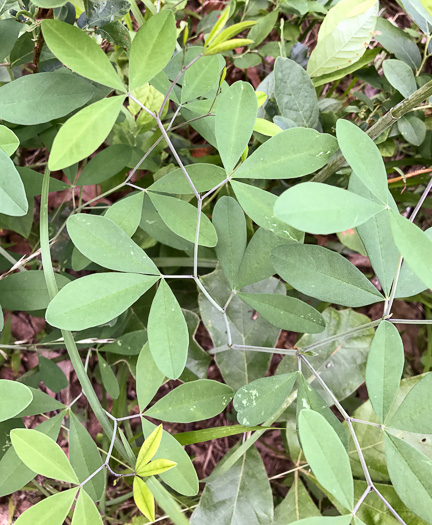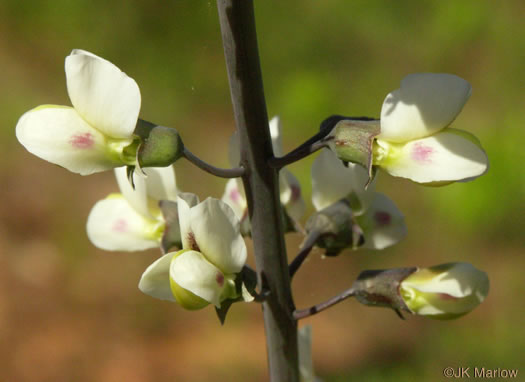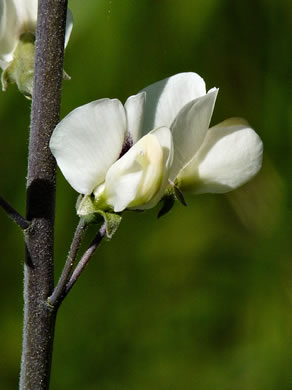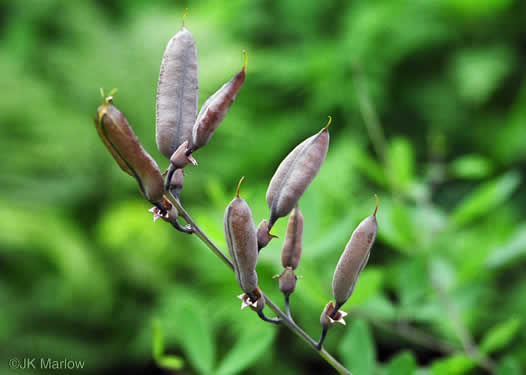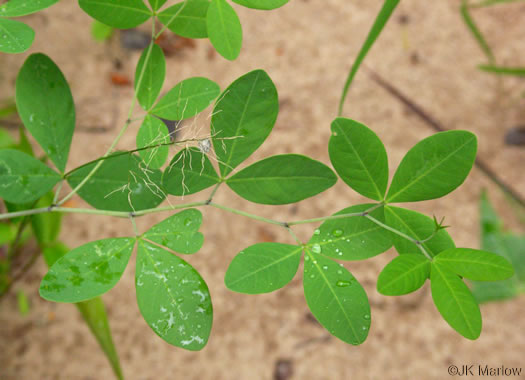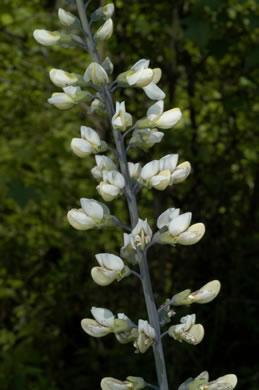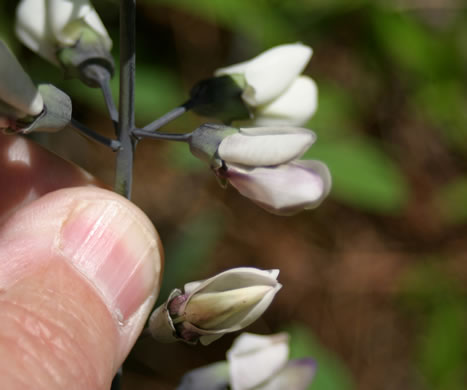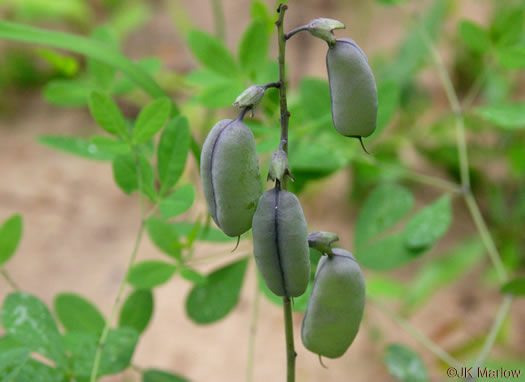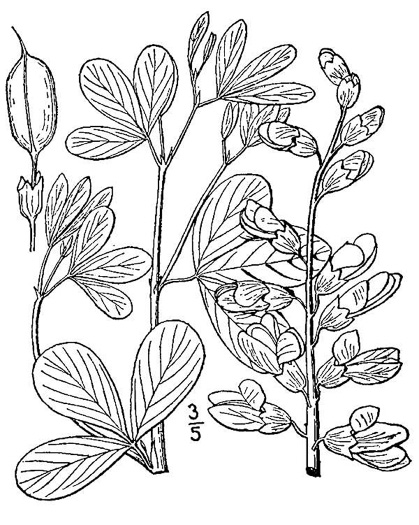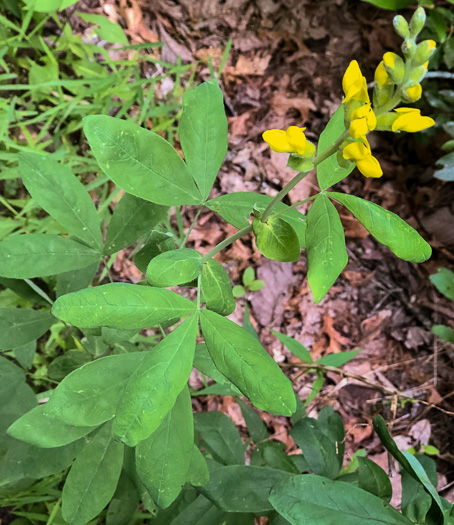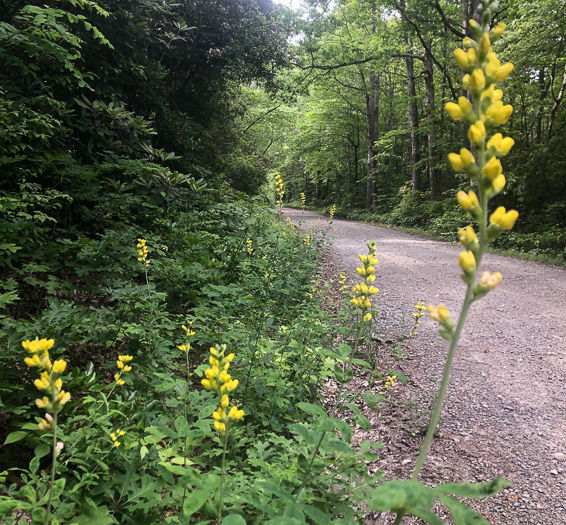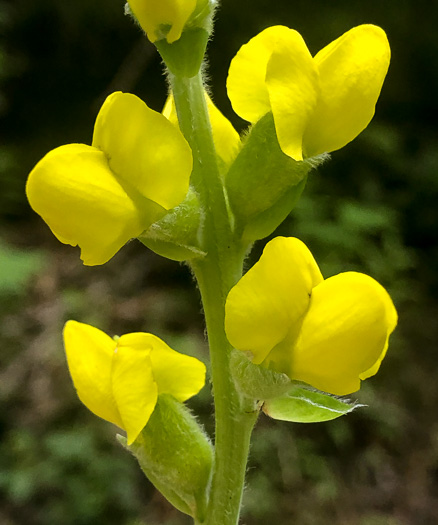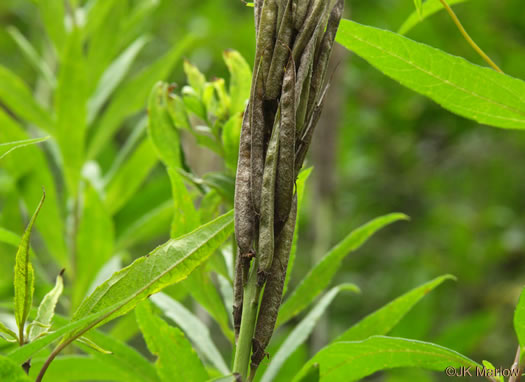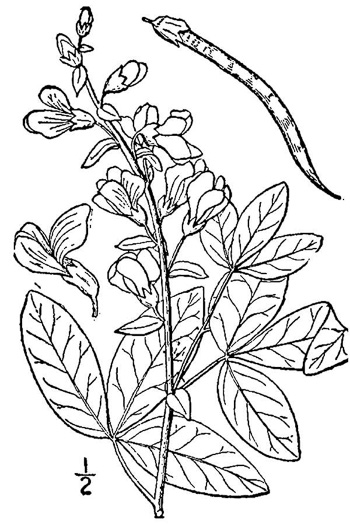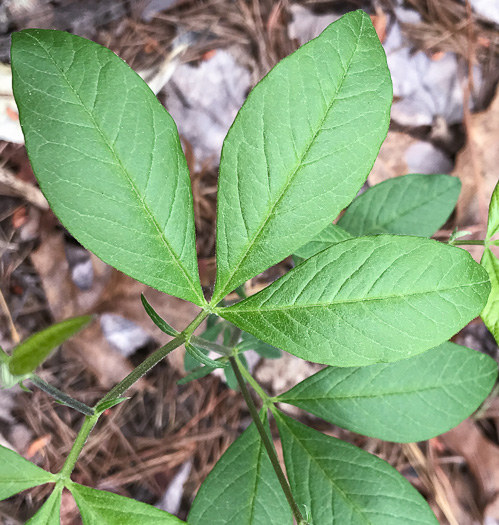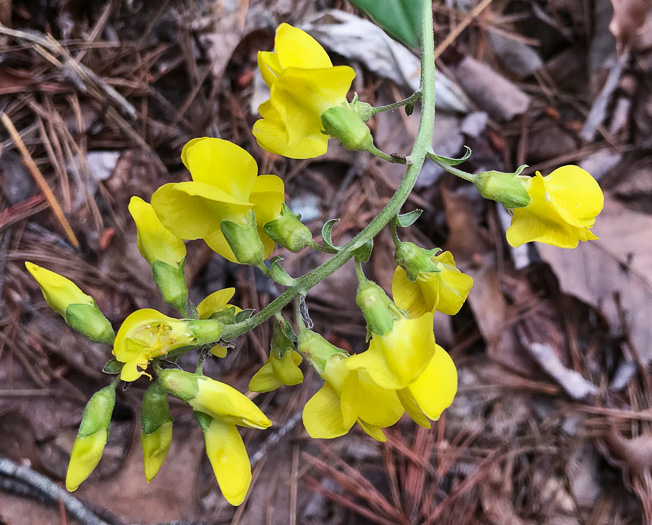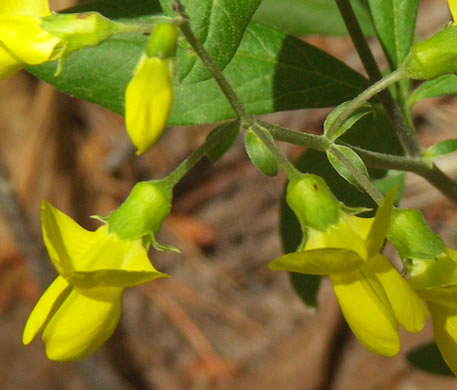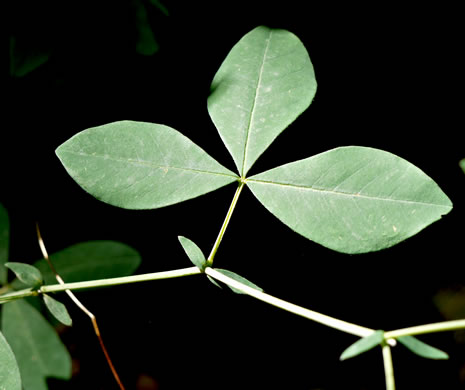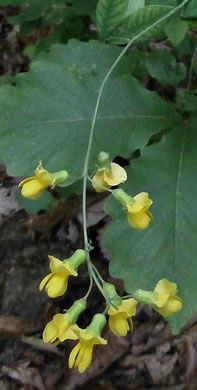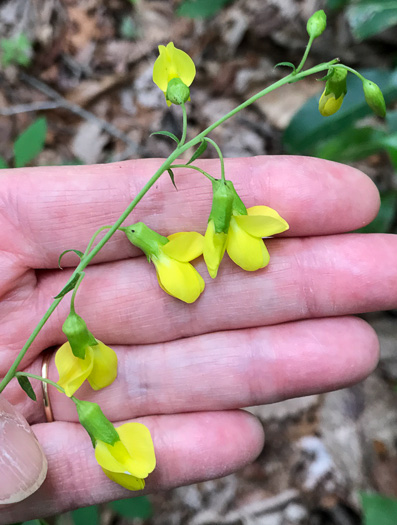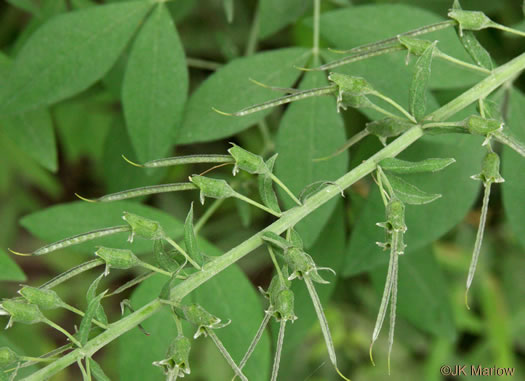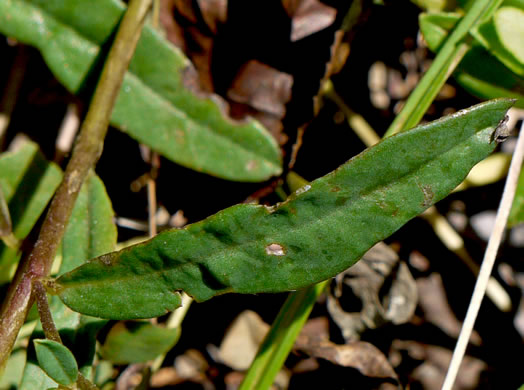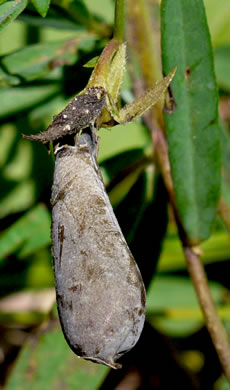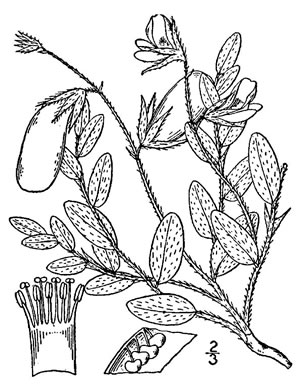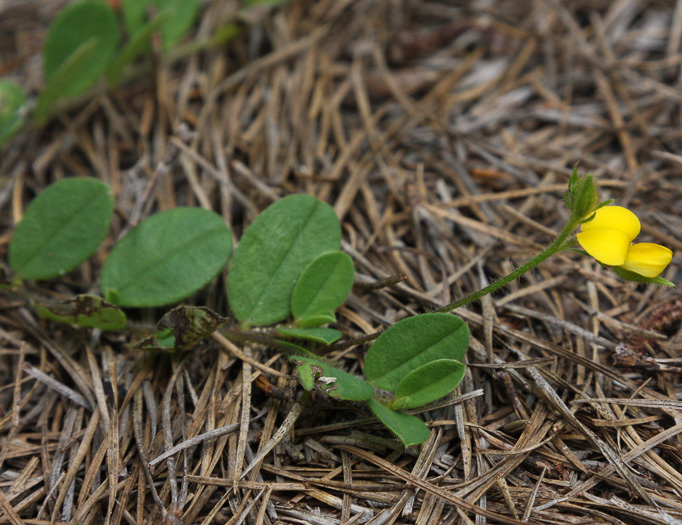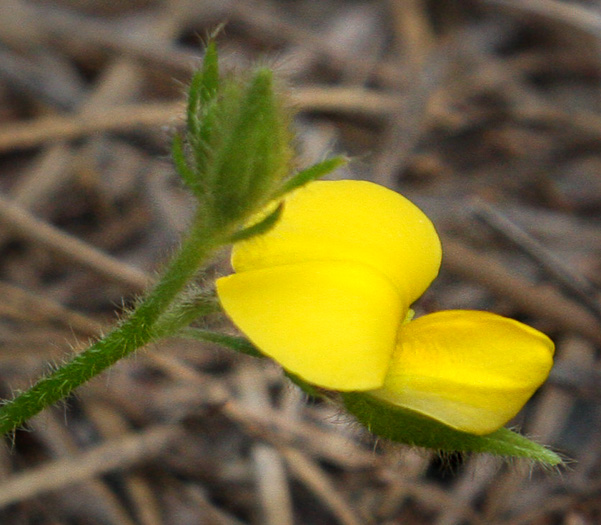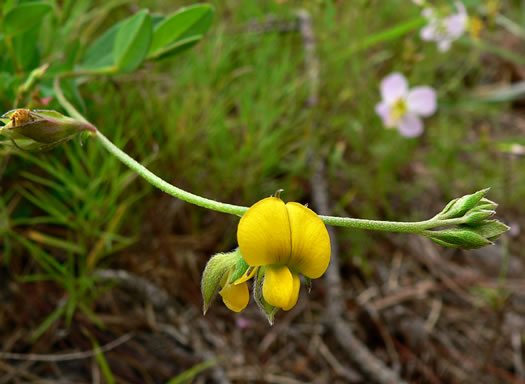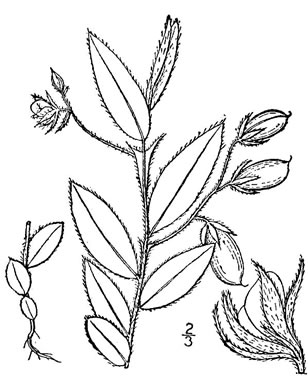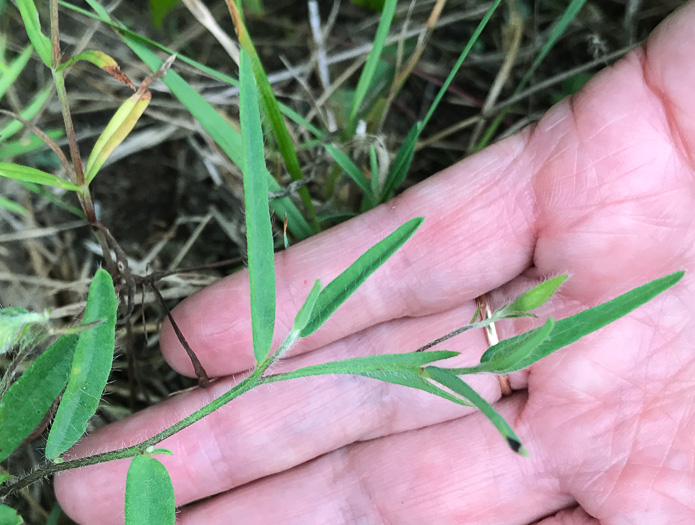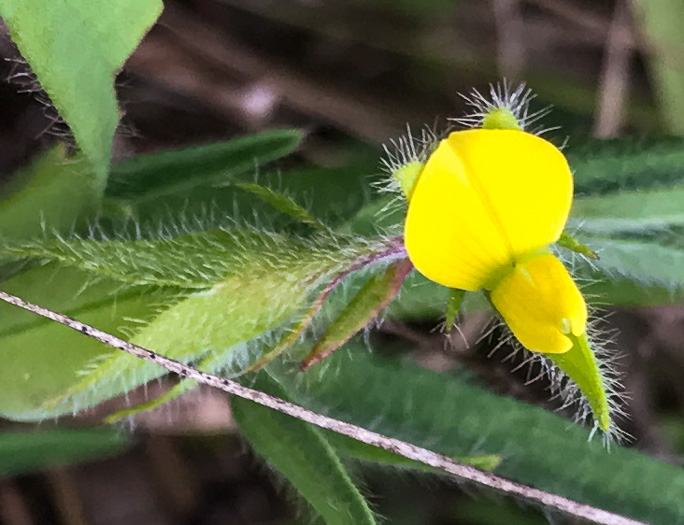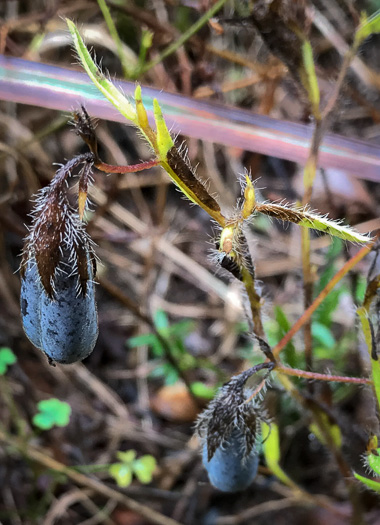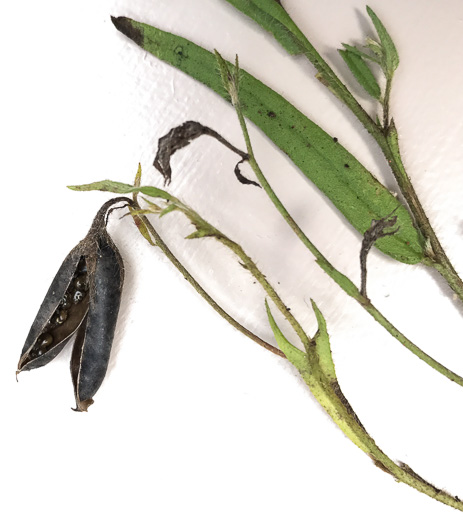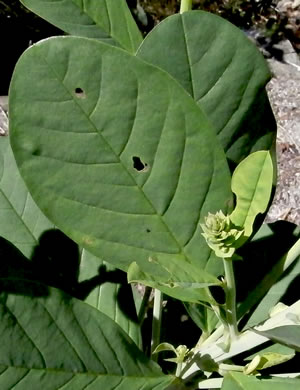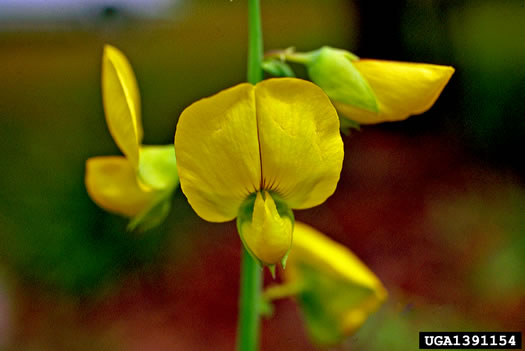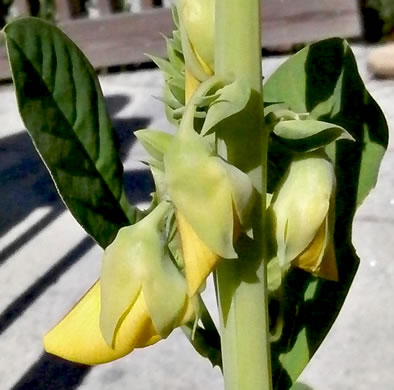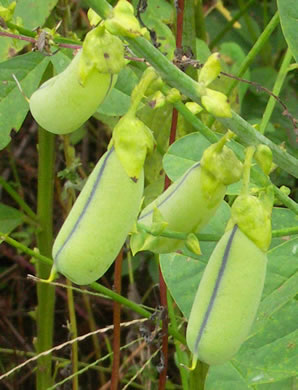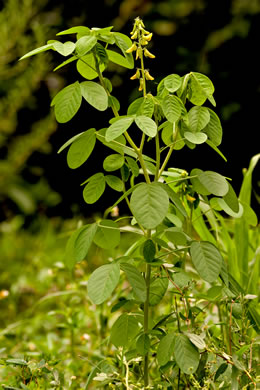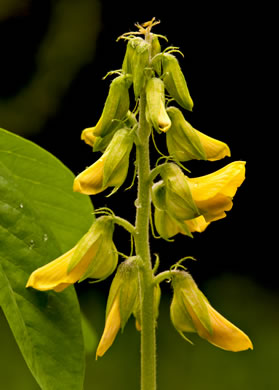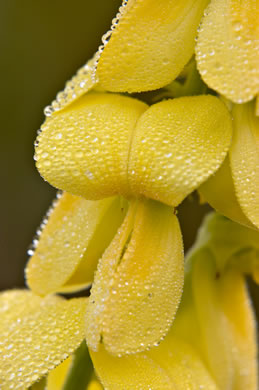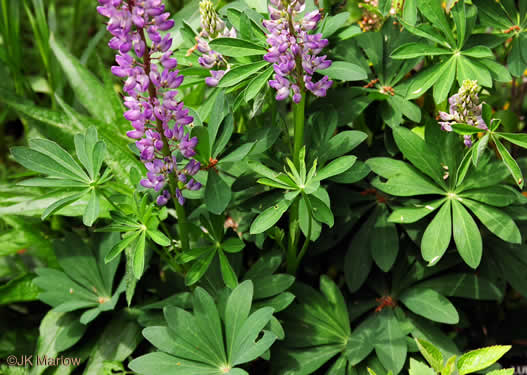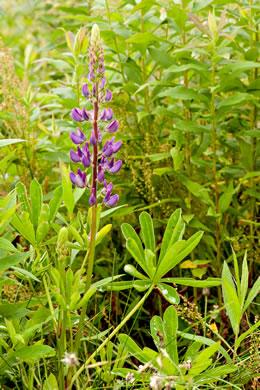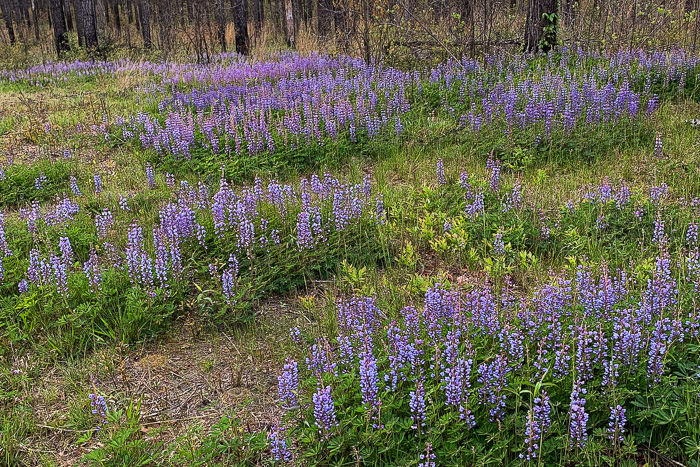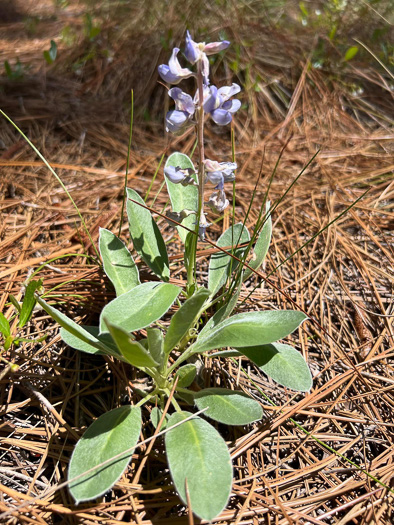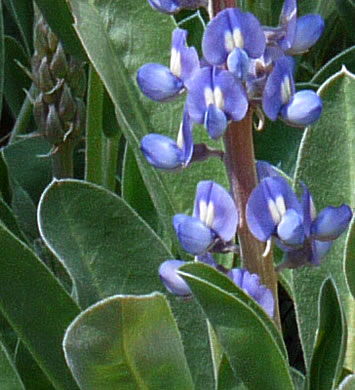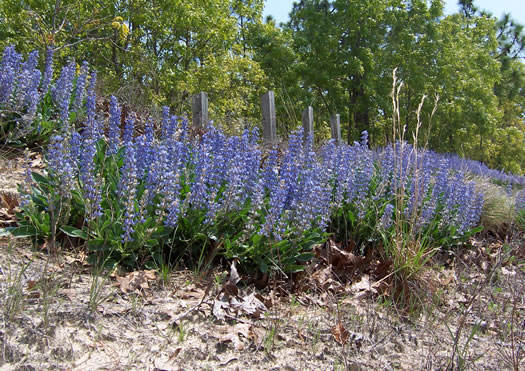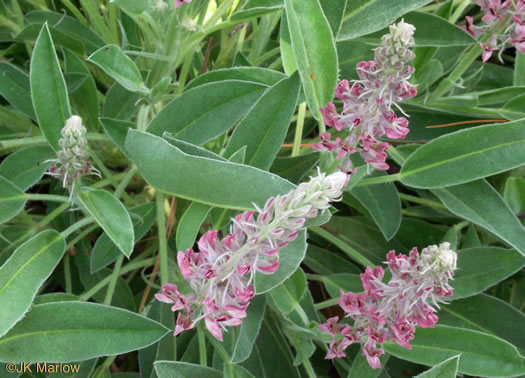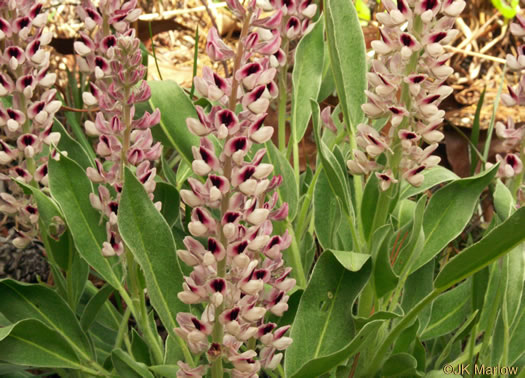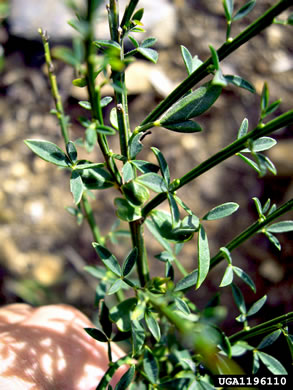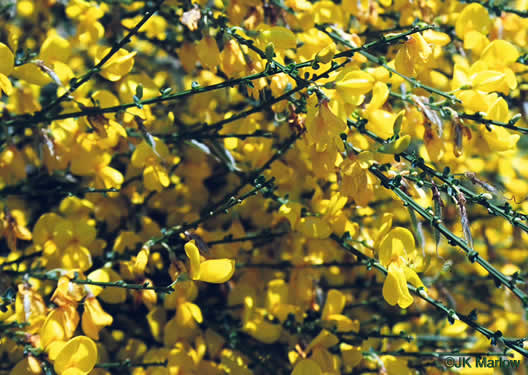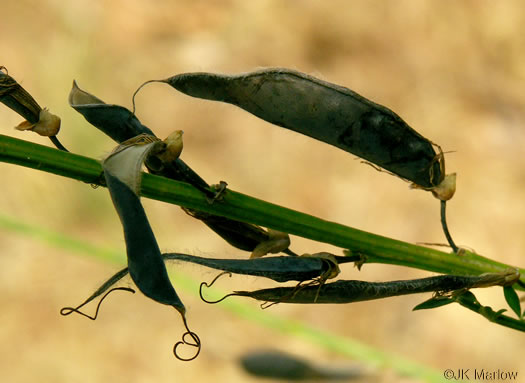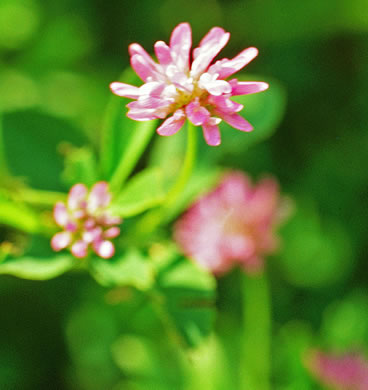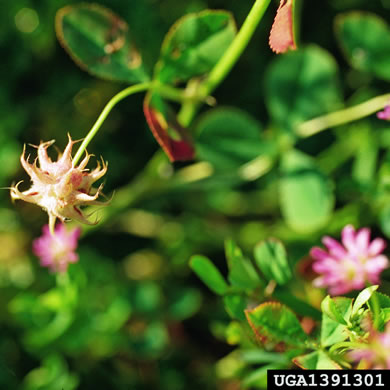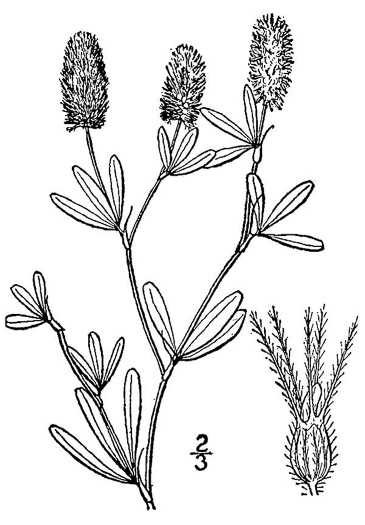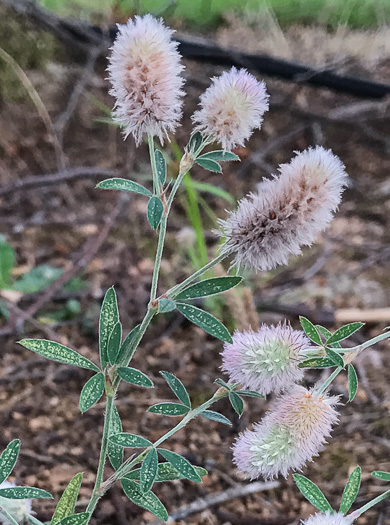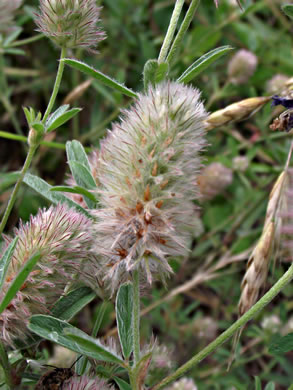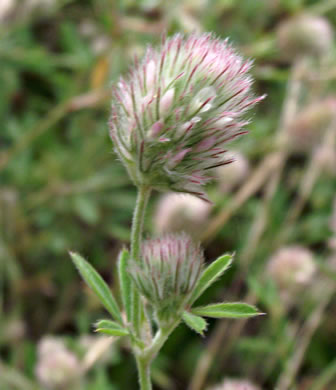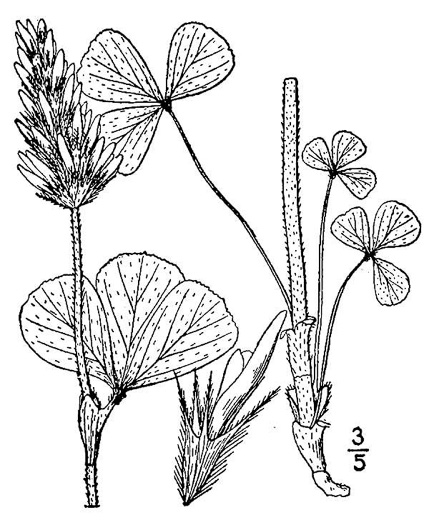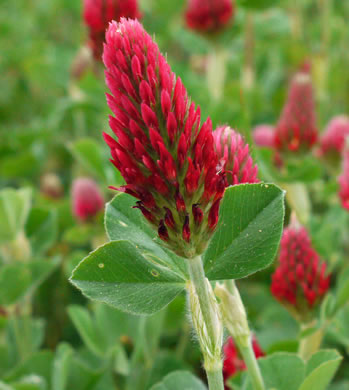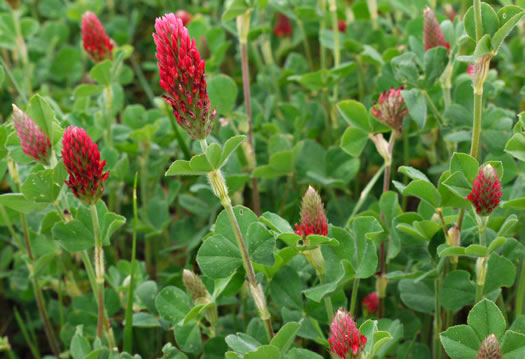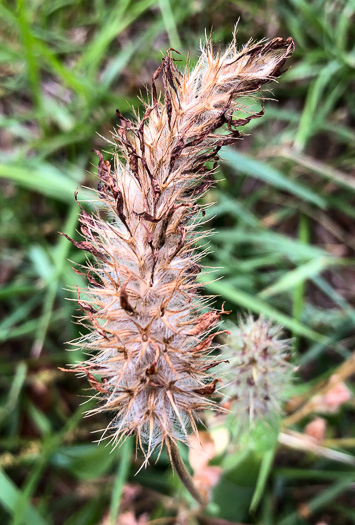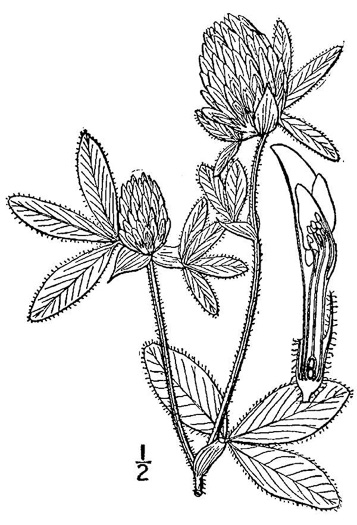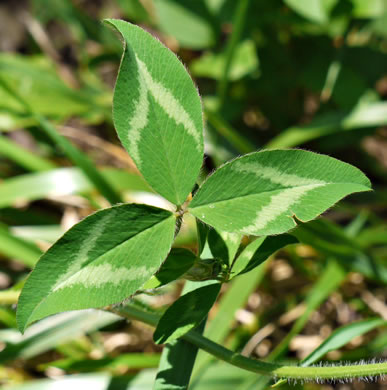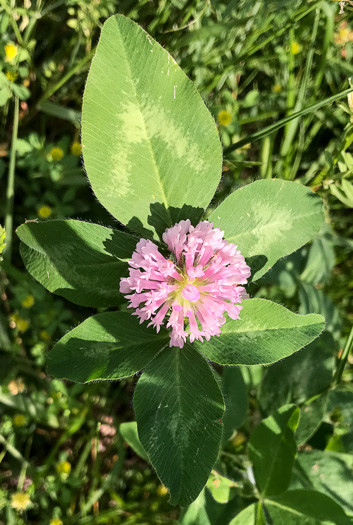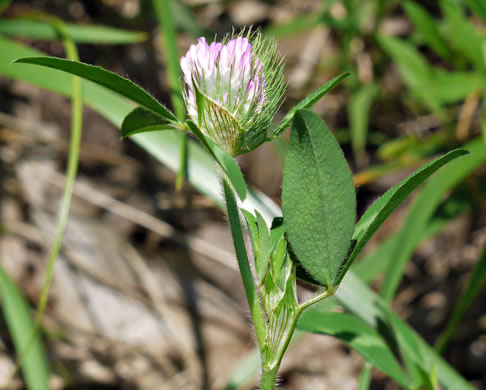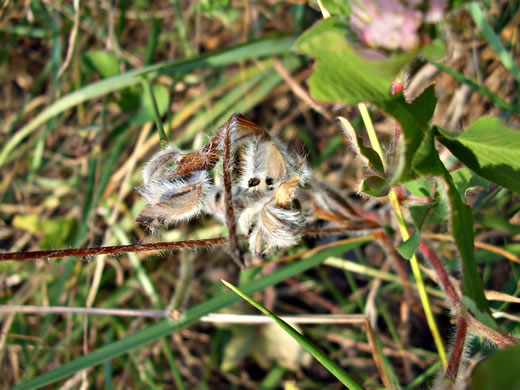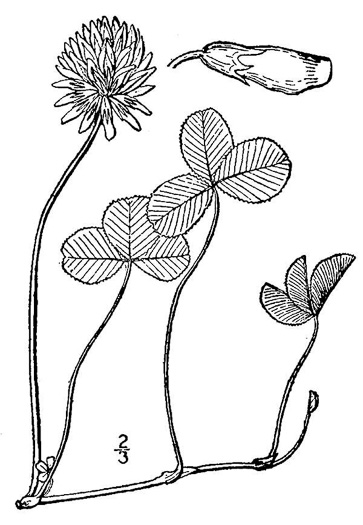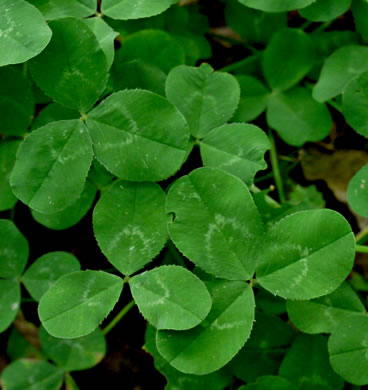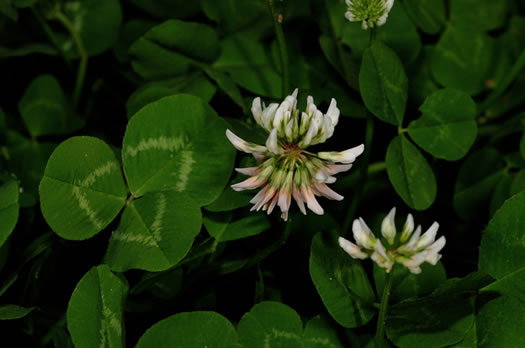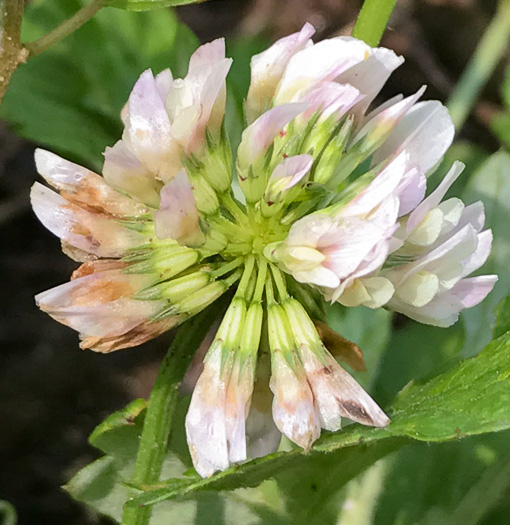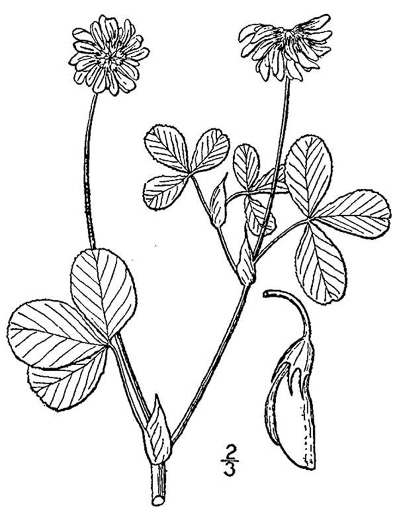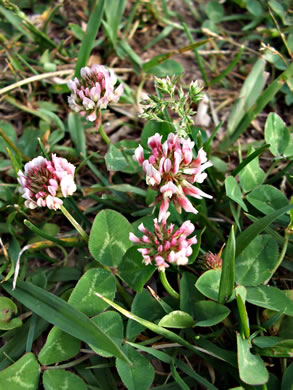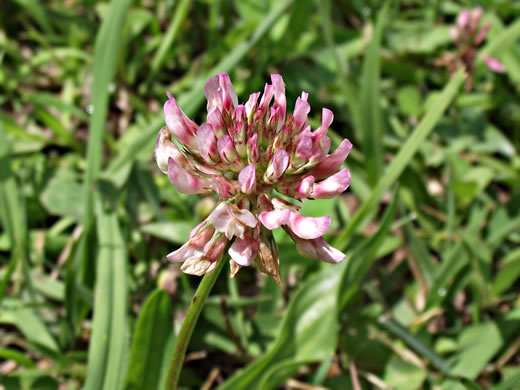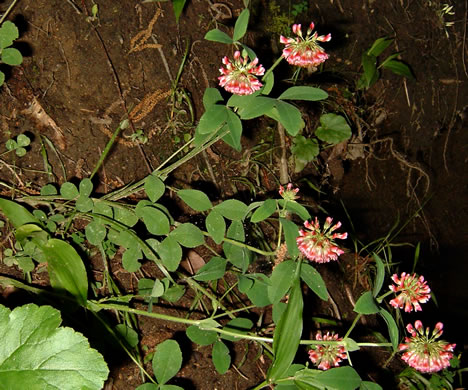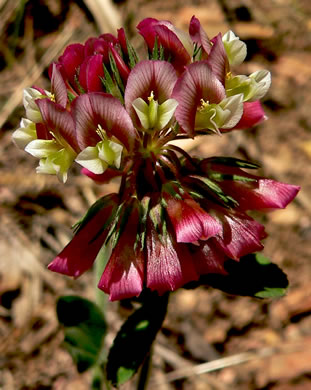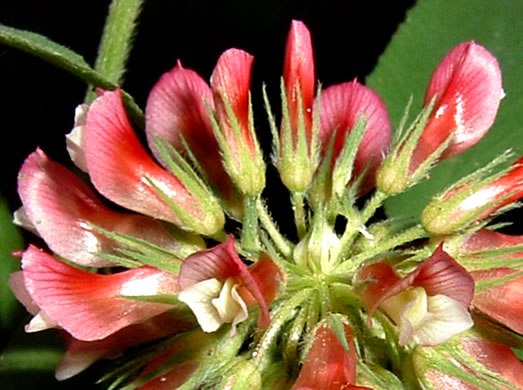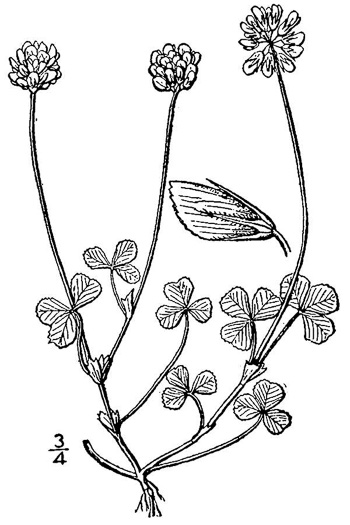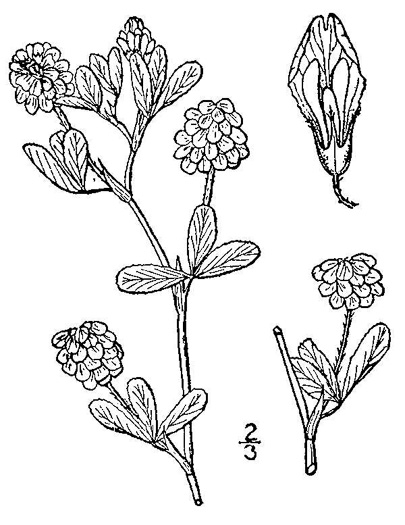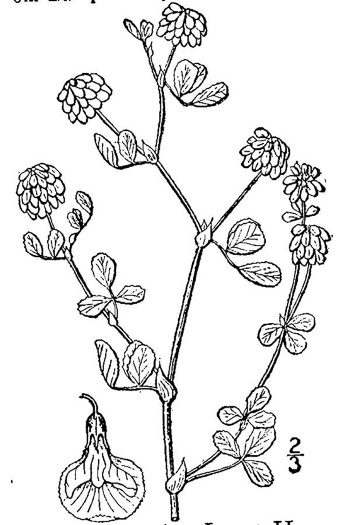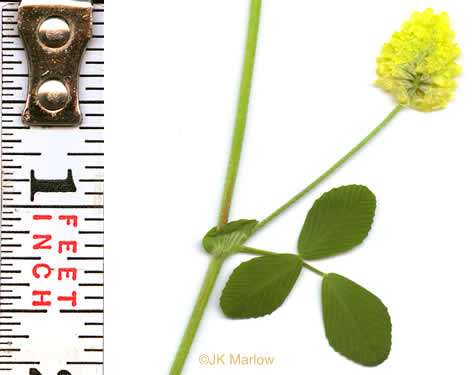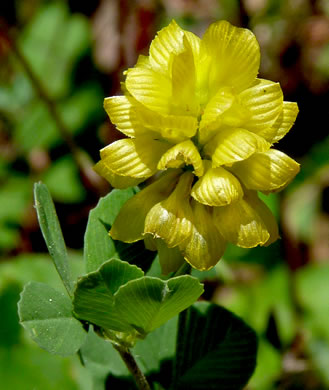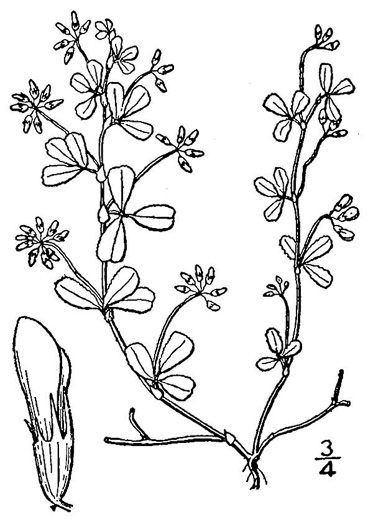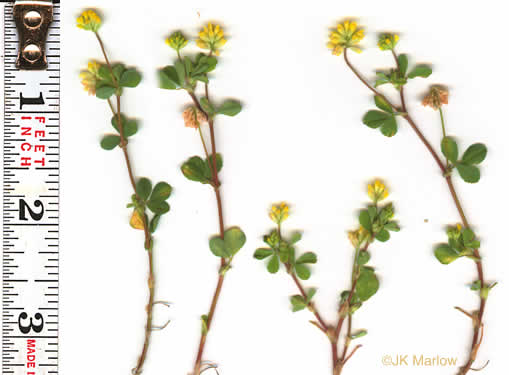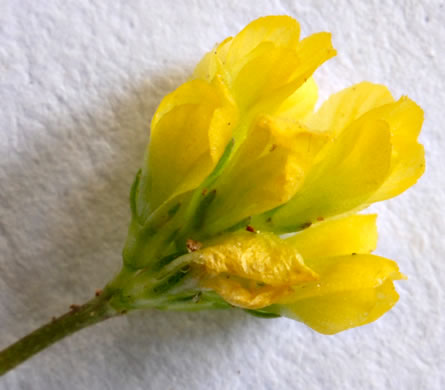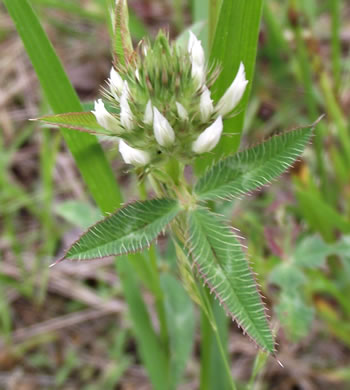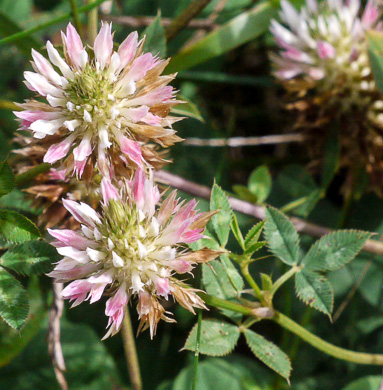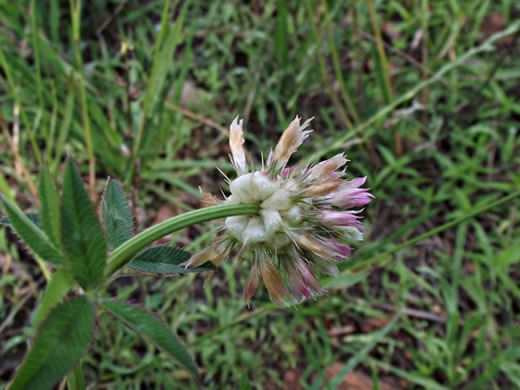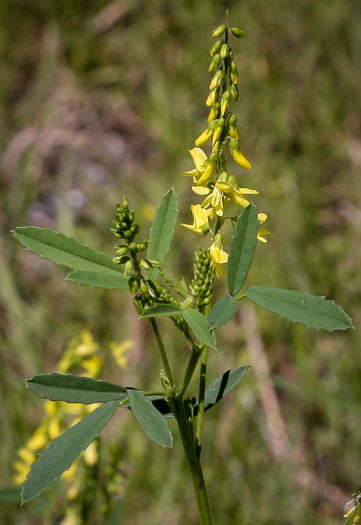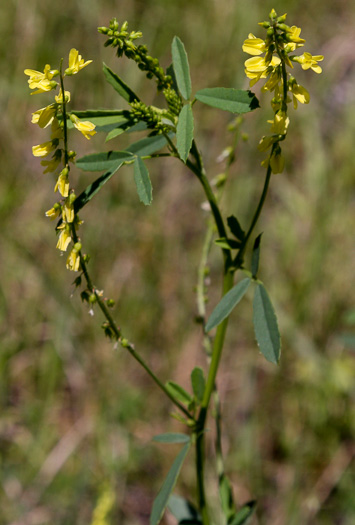Hovering over an image will enlarge it and point out features (works better on desktop than on mobile).
![]() A camera indicates there are pictures.
A camera indicates there are pictures.
![]() A speaker indicates that a botanical name is pronounced.
A speaker indicates that a botanical name is pronounced.
![]() A plus sign after a Latin name indicates that the species is further divided into varieties or subspecies.
A plus sign after a Latin name indicates that the species is further divided into varieties or subspecies.
Most habitat and range descriptions were obtained from Weakley's Flora.
Your search found 209 taxa in the family Fabaceae, Pea or Bean family, as understood by Vascular Flora of the Carolinas.

![]()
![]() Common Name:
Mimosa, Silktree, Albizia
Common Name:
Mimosa, Silktree, Albizia
Weakley's Flora: (4/14/23) Albizia julibrissin FAMILY: Fabaceae
SYNONYMOUS WITH PLANTS National Database: Albizia julibrissin FAMILY: Fabaceae
SYNONYMOUS WITH Vascular Flora of the Carolinas (Radford, Ahles, & Bell, 1968): Albizia julibrissin 098-01-001 FAMILY: Fabaceae
Habitat: Disturbed areas, suburban woodlots, escaped and persistent in forests and woodlands
Common
Non-native: warm-temperate and subtropical Asia

![]()
![]() Common Name:
Littleleaf Sensitive-briar, Eastern Sensitive-briar
Common Name:
Littleleaf Sensitive-briar, Eastern Sensitive-briar
Weakley's Flora: (4/24/22) Mimosa microphylla FAMILY: Fabaceae
SYNONYMOUS WITH PLANTS National Database: Mimosa microphylla FAMILY: Fabaceae
SYNONYMOUS WITH Vascular Flora of the Carolinas (Radford, Ahles, & Bell, 1968): Schrankia microphylla 098-02-001 FAMILY: Fabaceae
Habitat: Longleaf pine sandhills, other dry woodlands and forests, dry disturbed areas
Common
Native to the Carolinas & Georgia

![]()
![]() Common Name:
Florida Sensitive-briar, Powderpuff Mimosa
Common Name:
Florida Sensitive-briar, Powderpuff Mimosa
Weakley's Flora: (4/24/22) Mimosa floridana FAMILY: Fabaceae
SYNONYMOUS WITH PLANTS National Database: Mimosa quadrivalvis var. floridana FAMILY: Fabaceae
Habitat: Xeric longleaf pine sandhills and other dry, sandy habitats
Rare
Native to Georgia

![]()
![]() Common Name:
Mimosa Vine, Sensitive Vine, Powderpuff Mimosa, Vergonzosa
Common Name:
Mimosa Vine, Sensitive Vine, Powderpuff Mimosa, Vergonzosa
Weakley's Flora: (4/24/22) Mimosa strigillosa FAMILY: Fabaceae
SYNONYMOUS WITH PLANTS National Database: Mimosa strigillosa FAMILY: Fabaceae
Habitat: Floodplain forests, sandbars, open wet areas, also cultivated
Uncommon
Native to Georgia

![]() Common Name:
Illinois Bundleflower, Prairie Mimosa, Common Bundleflower
Common Name:
Illinois Bundleflower, Prairie Mimosa, Common Bundleflower
Weakley's Flora: (4/24/22) Desmanthus illinoensis FAMILY: Fabaceae
SYNONYMOUS WITH PLANTS National Database: Desmanthus illinoensis FAMILY: Fabaceae
SYNONYMOUS WITH Vascular Flora of the Carolinas (Radford, Ahles, & Bell, 1968): Desmanthus illinoensis 098-03-001 FAMILY: Fabaceae
Habitat: Prairies, open woodlands, barrens, marsh edges, disturbed areas
Rare
Native: south & west of the Carolinas & Georgia

![]()
![]() Common Name:
Eastern Redbud, Judas Tree
Common Name:
Eastern Redbud, Judas Tree
Weakley's Flora: (4/14/23) Cercis canadensis var. canadensis FAMILY: Fabaceae
SYNONYMOUS WITH PLANTS National Database: Cercis canadensis var. canadensis FAMILY: Fabaceae
INCLUDED WITHIN Vascular Flora of the Carolinas (Radford, Ahles, & Bell, 1968): Cercis canadensis 098-04-001 FAMILY: Fabaceae
Habitat: Moist to dry forests and woodlands, especially over calcareous or mafic rocks, also commonly planted as an ornamental
Common (uncommon in NC Coastal Plain)
Native to the Carolinas & Georgia

![]()
![]() Common Name:
Coffeeweed, Sicklepod
Common Name:
Coffeeweed, Sicklepod
Weakley's Flora: (4/24/22) Senna obtusifolia FAMILY: Fabaceae
SYNONYMOUS WITH PLANTS National Database: Senna obtusifolia FAMILY: Fabaceae
SYNONYMOUS WITH Vascular Flora of the Carolinas (Radford, Ahles, & Bell, 1968): Cassia obtusifolia 098-05-001 FAMILY: Fabaceae
Habitat: Fields (especially soybean fields), disturbed areas
Common (rare in NC Mountains)
Non-native: New World tropics?

![]()
![]() Common Name:
Northern Wild Senna
Common Name:
Northern Wild Senna
Weakley's Flora: (4/24/22) Senna hebecarpa FAMILY: Fabaceae
SYNONYMOUS WITH PLANTS National Database: Senna hebecarpa FAMILY: Fabaceae
SYNONYMOUS WITH Vascular Flora of the Carolinas (Radford, Ahles, & Bell, 1968): Cassia hebecarpa 098-05-003 FAMILY: Fabaceae
Habitat: Open wet habitats, moist forests
Rare
Native to the Carolinas & Georgia

![]() Common Name:
Maryland Wild Senna, Maryland Senna
Common Name:
Maryland Wild Senna, Maryland Senna
Weakley's Flora: (4/24/22) Senna marilandica FAMILY: Fabaceae
INCLUDED WITHIN PLANTS National Database: Senna marilandica FAMILY: Fabaceae
INCLUDED WITHIN Vascular Flora of the Carolinas (Radford, Ahles, & Bell, 1968): Cassia marilandica 098-05-004 FAMILY: Fabaceae
Habitat: Dry to moist forests, especially on greenstone and diabase barrens and rocky woodlands, thickets, woodland borders, sometimes somewhat weedy
Uncommon (rare in Coastal Plain)
Native to the Carolinas & Georgia

![]()
![]() Common Name:
Common Partridge-pea, Showy Partridge Pea
Common Name:
Common Partridge-pea, Showy Partridge Pea
Weakley's Flora: (4/24/22) Chamaecrista fasciculata var. fasciculata FAMILY: Fabaceae
INCLUDED WITHIN PLANTS National Database: Chamaecrista fasciculata var. fasciculata FAMILY: Fabaceae
INCLUDED WITHIN Vascular Flora of the Carolinas (Radford, Ahles, & Bell, 1968): Cassia fasciculata 098-05-005 FAMILY: Fabaceae
Habitat: Fields, disturbed areas, fencerows, and a wide range of other habitats
Common
Native to the Carolinas & Georgia

![]()
![]() Common Name:
Sensitive Partridge-pea, Common Sensitive-plant
Common Name:
Sensitive Partridge-pea, Common Sensitive-plant
Weakley's Flora: (4/24/22) Chamaecrista nictitans var. nictitans FAMILY: Fabaceae
SYNONYMOUS WITH PLANTS National Database: Chamaecrista nictitans ssp. nictitans var. nictitans FAMILY: Fabaceae
INCLUDED WITHIN Vascular Flora of the Carolinas (Radford, Ahles, & Bell, 1968): Cassia nictitans 098-05-006 FAMILY: Fabaceae
Habitat: Forests, woodlands, disturbed areas, pine savannas, and a wide variety of other habitats
Common
Native to the Carolinas & Georgia

![]()
![]() Common Name:
Honey Locust
Common Name:
Honey Locust
Weakley's Flora: (4/24/22) Gleditsia triacanthos FAMILY: Fabaceae
SYNONYMOUS WITH PLANTS National Database: Gleditsia triacanthos FAMILY: Fabaceae
SYNONYMOUS WITH Vascular Flora of the Carolinas (Radford, Ahles, & Bell, 1968): Gleditsia triacanthos 098-06-001 FAMILY: Fabaceae
Habitat: Woodlands, forests (generally bottomland), fencerows, often planted as a street tree
Common in Carolina Piedmont & SC Mountains (uncommon to rare elsewhere in GA-NC-SC)
Native to parts of the Carolinas & Georgia

![]()
![]() Common Name:
Water Locust
Common Name:
Water Locust
Weakley's Flora: (4/24/22) Gleditsia aquatica FAMILY: Fabaceae
SYNONYMOUS WITH PLANTS National Database: Gleditsia aquatica FAMILY: Fabaceae
SYNONYMOUS WITH Vascular Flora of the Carolinas (Radford, Ahles, & Bell, 1968): Gleditsia aquatica 098-06-002 FAMILY: Fabaceae
Habitat: Swamp forests, marshes
Common in Coastal Plain
Native to South Carolina & Georgia

![]()
![]() Common Name:
Kentucky Coffeetree, Kentucky Mahogany
Common Name:
Kentucky Coffeetree, Kentucky Mahogany
Weakley's Flora: (4/24/22) Gymnocladus dioicus FAMILY: Fabaceae
SYNONYMOUS WITH PLANTS National Database: Gymnocladus dioicus FAMILY: Fabaceae
SYNONYMOUS WITH (ORTHOGRAPHIC VARIANT) Vascular Flora of the Carolinas (Radford, Ahles, & Bell, 1968): Gymnocladus dioica 098-07-001 FAMILY: Fabaceae
Habitat: Native in bottomland and riparian forests, mesic upland forests and woodlands, stream banks, swamp margins, often along rivers; also in disturbed areas, persistent and weakly spreading from horticultural plantings
Rare or waif(s)
Native: north & west of the Carolinas & Georgia

![]()
![]() Common Name:
Kentucky Yellowwood, Gopherwood
Common Name:
Kentucky Yellowwood, Gopherwood
Weakley's Flora: (4/24/22) Cladrastis kentukea FAMILY: Fabaceae
SYNONYMOUS WITH PLANTS National Database: Cladrastis kentukea FAMILY: Fabaceae
SYNONYMOUS WITH Vascular Flora of the Carolinas (Radford, Ahles, & Bell, 1968): Cladrastis lutea 098-08-001 FAMILY: Fabaceae
Habitat: Mountain forests, Piedmont bluffs, especially on calcareous or mafic rocks (introduced only in the Piedmont of NC)
Rare or waif(s)
Native to the Carolinas & Georgia

![]()
![]() Common Name:
Gopherweed, Catbells
Common Name:
Gopherweed, Catbells
Weakley's Flora: (4/24/22) Baptisia perfoliata FAMILY: Fabaceae
SYNONYMOUS WITH PLANTS National Database: Baptisia perfoliata FAMILY: Fabaceae
SYNONYMOUS WITH Vascular Flora of the Carolinas (Radford, Ahles, & Bell, 1968): Baptisia perfoliata 098-09-001 FAMILY: Fabaceae
Habitat: Longleaf pine sandhills
Common in GA Coastal Plain, uncommon in SC Coastal Plain (rare elsewhere)
Native to South Carolina & Georgia

![]()
![]() Common Name:
Hairy Rattleweed, Hairy Wild Indigo
Common Name:
Hairy Rattleweed, Hairy Wild Indigo
Weakley's Flora: (4/24/22) Baptisia arachnifera FAMILY: Fabaceae
SYNONYMOUS WITH PLANTS National Database: Baptisia arachnifera FAMILY: Fabaceae
Habitat: Longleaf pine sandhills
Rare
Native to Georgia

![]()
![]() Common Name:
Tall Blue Wild Indigo, Streamside Blue Indigo, Tall Blue Baptisia
Common Name:
Tall Blue Wild Indigo, Streamside Blue Indigo, Tall Blue Baptisia
Weakley's Flora: (4/24/22) Baptisia australis FAMILY: Fabaceae
SYNONYMOUS WITH PLANTS National Database: Baptisia australis var. australis FAMILY: Fabaceae
INCLUDED WITHIN Vascular Flora of the Carolinas (Radford, Ahles, & Bell, 1968): Baptisia australis 098-09-002 FAMILY: Fabaceae
Habitat: Riverbank scour areas, gravel bars, and disturbed areas (where persisting from cultivation)
Rare or waif(s)
Native to Georgia & TN & northwards (original range obscured by cultivation)

![]()
![]() Common Name:
Eastern Prairie Blue Wild Indigo, Glade Wild Indigo, Glade Blue Wild Indigo, Glade Blue Baptisia
Common Name:
Eastern Prairie Blue Wild Indigo, Glade Wild Indigo, Glade Blue Wild Indigo, Glade Blue Baptisia
Weakley's Flora: (4/24/22) Baptisia aberrans FAMILY: Fabaceae
SYNONYMOUS WITH PLANTS National Database: Baptisia australis var. aberrans FAMILY: Fabaceae
INCLUDED WITHIN Vascular Flora of the Carolinas (Radford, Ahles, & Bell, 1968): Baptisia australis 098-09-002? FAMILY: Fabaceae
Habitat: Glades, barrens, and open woodlands over limestone (or other calcareous rocks) and diabase (or other mafic rocks), in areas that were formerly prairies, barrens, glades, or oak savannas
Rare
Native to North Carolina & Georgia

![]()
![]() Common Name:
Carolina Wild Indigo, Gray-hairy Wild Indigo
Common Name:
Carolina Wild Indigo, Gray-hairy Wild Indigo
Weakley's Flora: (4/24/22) Baptisia cinerea FAMILY: Fabaceae
SYNONYMOUS WITH PLANTS National Database: Baptisia cinerea FAMILY: Fabaceae
SYNONYMOUS WITH Vascular Flora of the Carolinas (Radford, Ahles, & Bell, 1968): Baptisia cinerea 098-09-003 FAMILY: Fabaceae
Habitat: Longleaf pine sandhills, other dry sandy woods
Common in Carolina Coastal Plain (where it is a narrow endemic), rare elsewhere
Native to the Carolinas

![]()
![]() Common Name:
Creamy Wild Indigo
Common Name:
Creamy Wild Indigo
Weakley's Flora: (4/24/22) Baptisia bracteata FAMILY: Fabaceae
SYNONYMOUS WITH PLANTS National Database: Baptisia bracteata var. bracteata FAMILY: Fabaceae
SYNONYMOUS WITH Vascular Flora of the Carolinas (Radford, Ahles, & Bell, 1968): Baptisia bracteata 098-09-004 FAMILY: Fabaceae
Habitat: Dry ridgetop woodlands and forests, longleaf pine sandhills, other dry woodlands
Uncommon (historically in NC, but not recently seen)
Native to the Carolinas & Georgia

![]() Common Name:
longbract wild indigo
Common Name:
longbract wild indigo
Weakley's Flora: (2/10/25) Baptisia leucophaea + FAMILY: Fabaceae
INCLUDED WITHIN PLANTS National Database: Baptisia bracteata FAMILY: Fabaceae
Look for it in pinelands and, depending on variety, woodlands or coastal prairies
Native: west of the Carolinas & Georgia

![]() Common Name:
Gopherweed, Lanceleaf Wild Indigo
Common Name:
Gopherweed, Lanceleaf Wild Indigo
Weakley's Flora: (2/10/25) Baptisia lanceolata FAMILY: Fabaceae
SYNONYMOUS WITH PLANTS National Database: Baptisia lanceolata var. lanceolata FAMILY: Fabaceae
INCLUDED WITHIN Vascular Flora of the Carolinas (Radford, Ahles, & Bell, 1968): Baptisia lanceolata 098-09-006 FAMILY: Fabaceae
Habitat: Longleaf pine sandhills, dry pine flatwoods
Common in GA Coastal Plain (rare elsewhere in GA-NC-SC)
Native to South Carolina & Georgia

![]() Common Name:
Nuttall's Wild Indigo
Common Name:
Nuttall's Wild Indigo
Weakley's Flora: (4/24/22) Baptisia nuttalliana FAMILY: Fabaceae
SYNONYMOUS WITH PLANTS National Database: Baptisia nuttalliana FAMILY: Fabaceae
Habitat: Woodlands and prairies
Native: south central US

![]()
![]() Common Name:
Horsefly Weed, Yellow Wild Indigo, Yellow False-indigo, Rattleweed
Common Name:
Horsefly Weed, Yellow Wild Indigo, Yellow False-indigo, Rattleweed
Weakley's Flora: (4/24/22) Baptisia tinctoria FAMILY: Fabaceae
SYNONYMOUS WITH PLANTS National Database: Baptisia tinctoria FAMILY: Fabaceae
SYNONYMOUS WITH Vascular Flora of the Carolinas (Radford, Ahles, & Bell, 1968): Baptisia tinctoria 098-09-007 FAMILY: Fabaceae
Habitat: Longleaf pine sandhills, pine flatwoods, xeric oak and pine woodlands, ridges, woodland edges, cobblebars, and roadbanks
Common (rare in GA Piedmont & GA Coastal Plain)
Native to the Carolinas & Georgia

![]() Common Name:
a hybrid Wild Indigo
Common Name:
a hybrid Wild Indigo
PLANTS National Database: Baptisia ×serenae [albescens × tinctoria] FAMILY: Fabaceae
Vascular Flora of the Carolinas (Radford, Ahles, & Bell, 1968): Baptisia serenae 098-09-008 FAMILY: Fabaceae
Rare?
Native to the Carolinas & Georgia

![]()
![]() Common Name:
Narrow-pod White Wild Indigo, Spiked Wild Indigo
Common Name:
Narrow-pod White Wild Indigo, Spiked Wild Indigo
Weakley's Flora: (4/24/22) Baptisia albescens FAMILY: Fabaceae
SYNONYMOUS WITH PLANTS National Database: Baptisia albescens FAMILY: Fabaceae
SYNONYMOUS WITH (MISAPPLIED) Vascular Flora of the Carolinas (Radford, Ahles, & Bell, 1968): Baptisia alba 098-09-009 FAMILY: Fabaceae
Habitat: Dry woodlands, pine flatwoods, roadsides
Uncommon (rare in GA & NC Mountains) (rare in GA Piedmont)
Native to the Carolinas & Georgia

![]()
![]() Common Name:
Thick-pod White Wild Indigo
Common Name:
Thick-pod White Wild Indigo
Weakley's Flora: (4/24/22) Baptisia alba FAMILY: Fabaceae
SYNONYMOUS WITH PLANTS National Database: Baptisia alba var. alba FAMILY: Fabaceae
SYNONYMOUS WITH Vascular Flora of the Carolinas (Radford, Ahles, & Bell, 1968): Baptisia pendula 098-09-010 FAMILY: Fabaceae
Habitat: Dry woodlands, pine flatwoods, roadsides
Common in Carolina Coastal Plain, uncommon in Carolina Piedmont (rare elsewhere in GA-NC-SC)
Native to the Carolinas & Georgia

![]() Common Name:
white wild indigo
Common Name:
white wild indigo
Weakley's Flora: (4/24/22) Baptisia lactea FAMILY: Fabaceae
SYNONYMOUS WITH PLANTS National Database: Baptisia alba var. macrophylla FAMILY: Fabaceae
Habitat: Woodlands, prairies, roadsides
Rare
Native west of the Carolinas & Georgia

![]() Common Name:
Apalachicola Wild Indigo, Bigpod Wild Indigo
Common Name:
Apalachicola Wild Indigo, Bigpod Wild Indigo
Weakley's Flora: (4/24/22) Baptisia megacarpa FAMILY: Fabaceae
INCLUDED WITHIN PLANTS National Database: Baptisia megacarpa FAMILY: Fabaceae
Habitat: Moist forests of floodplains and lower slopes
Rare
Native to Georgia

![]()
![]() Common Name:
Aaron's Rod, Blue Ridge Golden-banner, Hairy Bush Pea
Common Name:
Aaron's Rod, Blue Ridge Golden-banner, Hairy Bush Pea
Weakley's Flora: (4/24/22) Thermopsis villosa FAMILY: Fabaceae
SYNONYMOUS WITH PLANTS National Database: Thermopsis villosa FAMILY: Fabaceae
SYNONYMOUS WITH Vascular Flora of the Carolinas (Radford, Ahles, & Bell, 1968): Thermopsis villosa 098-10-001 FAMILY: Fabaceae
Habitat: Floodplains, mesic disturbed areas, woodland edges, roadbanks
Rare in Mountains (waifs elsewhere in GA-NC-SC, where escaped from cultivation)
Native to North Carolina & Georgia

![]()
![]() Common Name:
Appalachian Golden-banner, Allegheny Mountain Golden-banner, Bush Pea
Common Name:
Appalachian Golden-banner, Allegheny Mountain Golden-banner, Bush Pea
Weakley's Flora: (4/14/23) Thermopsis mollis FAMILY: Fabaceae
SYNONYMOUS WITH PLANTS National Database: Thermopsis mollis FAMILY: Fabaceae
SYNONYMOUS WITH Vascular Flora of the Carolinas (Radford, Ahles, & Bell, 1968): Thermopsis mollis 098-10-002 FAMILY: Fabaceae
Habitat: Montane oak-hickory forests and woodlands, granitic dome margins, other dry slopes and ridges
Rare
Native to the Carolinas & Georgia

![]()
![]() Common Name:
Ashleaf Golden-banner
Common Name:
Ashleaf Golden-banner
Weakley's Flora: (4/14/23) Thermopsis fraxinifolia FAMILY: Fabaceae
SYNONYMOUS WITH PLANTS National Database: Thermopsis fraxinifolia FAMILY: Fabaceae
SYNONYMOUS WITH Vascular Flora of the Carolinas (Radford, Ahles, & Bell, 1968): Thermopsis fraxinifolia 098-10-003 FAMILY: Fabaceae
Habitat: Dry slopes and ridges with oak and/or pine canopy, pine-oak heaths and savannas
Rare
Native to the Carolinas & Georgia

![]() Common Name:
Coastal Plain Rattlebox, Pursh's Rattlebox
Common Name:
Coastal Plain Rattlebox, Pursh's Rattlebox
Weakley's Flora: (4/24/22) Crotalaria purshii FAMILY: Fabaceae
SYNONYMOUS WITH PLANTS National Database: Crotalaria purshii FAMILY: Fabaceae
SYNONYMOUS WITH Vascular Flora of the Carolinas (Radford, Ahles, & Bell, 1968): Crotalaria purshii 098-11-001 FAMILY: Fabaceae
Habitat: Mesic to dry pinelands, sandy openings, roadsides
Common in Coastal Plain (rare elsewhere in GA-NC-SC)
Native to the Carolinas & Georgia

![]() Common Name:
Low Rattlebox, Rabbitbells
Common Name:
Low Rattlebox, Rabbitbells
Weakley's Flora: (4/24/22) Crotalaria rotundifolia FAMILY: Fabaceae
INCLUDED WITHIN PLANTS National Database: Crotalaria rotundifolia FAMILY: Fabaceae
INCLUDED WITHIN (MISAPPLIED) Vascular Flora of the Carolinas (Radford, Ahles, & Bell, 1968): Crotalaria angulata 098-11-002 FAMILY: Fabaceae
Habitat: Sandy forests and woodlands, roadsides
Common in Coastal Plain, uncommon in Piedmont of GA & SC (rare elsewhere in GA-NC-SC)
Native to the Carolinas & Georgia

![]() Common Name:
Low Rattlebox, Rabbitbells
Common Name:
Low Rattlebox, Rabbitbells
Weakley's Flora: (4/24/22) Crotalaria maritima FAMILY: Fabaceae
INCLUDED WITHIN PLANTS National Database: Crotalaria rotundifolia FAMILY: Fabaceae
INCLUDED WITHIN (MISAPPLIED) Vascular Flora of the Carolinas (Radford, Ahles, & Bell, 1968): Crotalaria angulata 098-11-002? FAMILY: Fabaceae
Habitat: Sandy forests and woodlands, roadsides
Rare
Native to South Carolina & Georgia

![]() Common Name:
Arrowhead Rattlebox, Common Rattlebox
Common Name:
Arrowhead Rattlebox, Common Rattlebox
Weakley's Flora: (2/10/25) Crotalaria sagittalis var. sagittalis FAMILY: Fabaceae
INCLUDED WITHIN PLANTS National Database: Crotalaria sagittalis FAMILY: Fabaceae
INCLUDED WITHIN Vascular Flora of the Carolinas (Radford, Ahles, & Bell, 1968): Crotalaria sagittalis 098-11-003 FAMILY: Fabaceae
Habitat: Woodlands, woodland edges, barrens, prairies, openings, fields
Uncommon (rare in NC Mountains) (rare in Coastal Plain)
Native to the Carolinas & Georgia

![]()
![]() Common Name:
Showy Rattlebox
Common Name:
Showy Rattlebox
Weakley's Flora: (4/24/22) Crotalaria spectabilis FAMILY: Fabaceae
SYNONYMOUS WITH PLANTS National Database: Crotalaria spectabilis FAMILY: Fabaceae
SYNONYMOUS WITH Vascular Flora of the Carolinas (Radford, Ahles, & Bell, 1968): Crotalaria spectabilis 098-11-004 FAMILY: Fabaceae
Habitat: Fields, roadsides, disturbed areas
Common (rare in Mountains)
Non-native: southern Asia

![]()
![]() Common Name:
Smooth Rattlebox
Common Name:
Smooth Rattlebox
Weakley's Flora: (4/24/22) Crotalaria pallida var. obovata FAMILY: Fabaceae
SYNONYMOUS WITH PLANTS National Database: Crotalaria pallida var. obovata FAMILY: Fabaceae
(?) (MISAPPLIED) Vascular Flora of the Carolinas (Radford, Ahles, & Bell, 1968): Crotalaria mucronata 098-11-006 FAMILY: Fabaceae
Habitat: Roadsides and fields
Common in Coastal Plain (rare in Piedmont)
Non-native: Africa

![]() Common Name:
Slenderleaf Rattlebox
Common Name:
Slenderleaf Rattlebox
Weakley's Flora: (4/24/22) Crotalaria ochroleuca FAMILY: Fabaceae
SYNONYMOUS WITH PLANTS National Database: Crotalaria ochroleuca FAMILY: Fabaceae
(?) (MISAPPLIED) Vascular Flora of the Carolinas (Radford, Ahles, & Bell, 1968): Crotalaria intermedia 098-11-007 FAMILY: Fabaceae
Habitat: Roadsides and sandy fields
Rare
Non-native: Africa

![]() Common Name:
Northern Sundial Lupine
Common Name:
Northern Sundial Lupine
Weakley's Flora: (4/14/23) Lupinus perennis var. perennis FAMILY: Fabaceae
INCLUDING PLANTS National Database: Lupinus perennis ssp. perennis var. perennis FAMILY: Fabaceae
INCLUDED WITHIN Vascular Flora of the Carolinas (Radford, Ahles, & Bell, 1968): Lupinus perennis 098-12-001 FAMILY: Fabaceae
Habitat: Longleaf pine sandhills, sandy roadsides, other dry (and usually sandy and nutrient-poor) habitats
Uncommon in Carolina Coastal Plain (rare in Piedmont)
Native to the Carolinas

Common Name: Southern Sundial Lupine
Weakley's Flora: (4/24/22) Lupinus perennis var. gracilis FAMILY: Fabaceae
SYNONYMOUS WITH PLANTS National Database: Lupinus perennis ssp. gracilis FAMILY: Fabaceae
INCLUDED WITHIN Vascular Flora of the Carolinas (Radford, Ahles, & Bell, 1968): Lupinus perennis 098-12-001? FAMILY: Fabaceae
Habitat: Longleaf pine sandhills and sandy or dry rocky roadsides
Common in Coastal Plain (rare in Piedmont)
Native to Georgia & South Carolina

![]() Common Name:
Blue Sandhill Lupine, Sky-blue Lupine
Common Name:
Blue Sandhill Lupine, Sky-blue Lupine
Weakley's Flora: (4/24/22) Lupinus diffusus FAMILY: Fabaceae
INCLUDED WITHIN PLANTS National Database: Lupinus diffusus FAMILY: Fabaceae
INCLUDED WITHIN Vascular Flora of the Carolinas (Radford, Ahles, & Bell, 1968): Lupinus diffusus 098-12-002 FAMILY: Fabaceae
Habitat: Longleaf pine sandhills, sandy roadsides
Common in Coastal Plain
Native to the Carolinas & Georgia

![]()
![]() Common Name:
Lady Lupine, Pink Sandhill Lupine
Common Name:
Lady Lupine, Pink Sandhill Lupine
Weakley's Flora: (4/24/22) Lupinus villosus FAMILY: Fabaceae
SYNONYMOUS WITH PLANTS National Database: Lupinus villosus FAMILY: Fabaceae
SYNONYMOUS WITH Vascular Flora of the Carolinas (Radford, Ahles, & Bell, 1968): Lupinus villosus 098-12-003 FAMILY: Fabaceae
Habitat: Longleaf pine sandhills, sandy roadsides and disturbed areas
Common in GA & SC Coastal Plain (uncommon in NC)
Native to the Carolinas & Georgia

Common Name: Narrowleaf Lupine
Weakley's Flora: (4/24/22) Lupinus angustifolius FAMILY: Fabaceae
SYNONYMOUS WITH PLANTS National Database: Lupinus angustifolius FAMILY: Fabaceae
Habitat: Fields, disturbed areas
Waif(s)
Non-native: Mediterranean Europe

![]()
![]() Common Name:
Scotch Broom
Common Name:
Scotch Broom
Weakley's Flora: (4/24/22) Cytisus scoparius FAMILY: Fabaceae
INCLUDING PLANTS National Database: Cytisus scoparius var. scoparius FAMILY: Fabaceae
SYNONYMOUS WITH Vascular Flora of the Carolinas (Radford, Ahles, & Bell, 1968): Cytisus scoparius 098-13-001 FAMILY: Fabaceae
Habitat: Roadbanks, woodland borders, disturbed areas
Common in SC Mountains & Carolina Piedmont, uncommon in NC Mountains & GA Piedmont (rare elsewhere in GA-NC-SC)
Non-native: Europe

![]()
![]() Common Name:
Persian Clover, Reversed Clover
Common Name:
Persian Clover, Reversed Clover
Weakley's Flora: (4/24/22) Trifolium resupinatum FAMILY: Fabaceae
SYNONYMOUS WITH PLANTS National Database: Trifolium resupinatum FAMILY: Fabaceae
SYNONYMOUS WITH Vascular Flora of the Carolinas (Radford, Ahles, & Bell, 1968): Trifolium resupinatum 098-14-001 FAMILY: Fabaceae
Habitat: Lawns and disturbed areas
Waif(s)
Non-native: Mediterranean region & western Asia

![]()
![]() Common Name:
Rabbitfoot Clover
Common Name:
Rabbitfoot Clover
Weakley's Flora: (4/24/22) Trifolium arvense FAMILY: Fabaceae
SYNONYMOUS WITH PLANTS National Database: Trifolium arvense FAMILY: Fabaceae
SYNONYMOUS WITH Vascular Flora of the Carolinas (Radford, Ahles, & Bell, 1968): Trifolium arvense 098-14-003 FAMILY: Fabaceae
Habitat: Disturbed areas, shale barrens
Common (rare in GA Mountains)
Non-native: Mediterranean region

![]()
![]() Common Name:
Crimson Clover
Common Name:
Crimson Clover
Weakley's Flora: (4/24/22) Trifolium incarnatum FAMILY: Fabaceae
SYNONYMOUS WITH PLANTS National Database: Trifolium incarnatum FAMILY: Fabaceae
SYNONYMOUS WITH Vascular Flora of the Carolinas (Radford, Ahles, & Bell, 1968): Trifolium incarnatum 098-14-004 FAMILY: Fabaceae
Habitat: Fields, disturbed areas
Common (uncommon in Mountains, uncommon in GA Coastal Plain)
Non-native: Europe

![]()
![]() Common Name:
Red Clover
Common Name:
Red Clover
Weakley's Flora: (4/24/22) Trifolium pratense FAMILY: Fabaceae
SYNONYMOUS WITH PLANTS National Database: Trifolium pratense FAMILY: Fabaceae
SYNONYMOUS WITH Vascular Flora of the Carolinas (Radford, Ahles, & Bell, 1968): Trifolium pratense 098-14-005 FAMILY: Fabaceae
Habitat: Fields, roadsides, disturbed areas
Common (uncommon in GA Coastal Plain)
Non-native: Europe

![]()
![]() Common Name:
White Clover, White Dutch Clover, Ladino Clover
Common Name:
White Clover, White Dutch Clover, Ladino Clover
Weakley's Flora: (4/24/22) Trifolium repens FAMILY: Fabaceae
SYNONYMOUS WITH PLANTS National Database: Trifolium repens FAMILY: Fabaceae
SYNONYMOUS WITH Vascular Flora of the Carolinas (Radford, Ahles, & Bell, 1968): Trifolium repens 098-14-008 FAMILY: Fabaceae
Habitat: Lawns, roadsides, disturbed areas
Common
Non-native: Eurasia

![]()
![]() Common Name:
Alsike Clover
Common Name:
Alsike Clover
Weakley's Flora: (4/24/22) Trifolium hybridum FAMILY: Fabaceae
SYNONYMOUS WITH PLANTS National Database: Trifolium hybridum FAMILY: Fabaceae
SYNONYMOUS WITH Vascular Flora of the Carolinas (Radford, Ahles, & Bell, 1968): Trifolium hybridum 098-14-009 FAMILY: Fabaceae
Habitat: Lawns, fields, roadsides, disturbed areas
Common (rare in GA Piedmont & GA Coastal Plain)
Non-native: Europe

![]() Common Name:
Buffalo Clover
Common Name:
Buffalo Clover
Weakley's Flora: (4/24/22) Trifolium reflexum FAMILY: Fabaceae
SYNONYMOUS WITH PLANTS National Database: Trifolium reflexum FAMILY: Fabaceae
SYNONYMOUS WITH Vascular Flora of the Carolinas (Radford, Ahles, & Bell, 1968): Trifolium reflexum 098-14-010 FAMILY: Fabaceae
Habitat: Open woodlands, woodland edges, dry shaly places
Rare
Native to the Carolinas & Georgia

![]() Common Name:
Carolina Clover, Wild White Clover
Common Name:
Carolina Clover, Wild White Clover
Weakley's Flora: (4/24/22) Trifolium carolinianum FAMILY: Fabaceae
SYNONYMOUS WITH PLANTS National Database: Trifolium carolinianum FAMILY: Fabaceae
SYNONYMOUS WITH Vascular Flora of the Carolinas (Radford, Ahles, & Bell, 1968): Trifolium carolinianum 098-14-011 FAMILY: Fabaceae
Habitat: Open woodlands, woodland edges, pine savannas, thin soils around rock outcrops, disturbed areas
Rare (historically in NC, but not recently seen)
Native to the Carolinas & Georgia

![]() Common Name:
Large Hop Clover, Yellow Clover, Golden Clover
Common Name:
Large Hop Clover, Yellow Clover, Golden Clover
Weakley's Flora: (4/24/22) Trifolium aureum FAMILY: Fabaceae
SYNONYMOUS WITH PLANTS National Database: Trifolium aureum FAMILY: Fabaceae
SYNONYMOUS WITH (MISAPPLIED) Vascular Flora of the Carolinas (Radford, Ahles, & Bell, 1968): Trifolium agrarium 098-14-012 FAMILY: Fabaceae
Habitat: Fields, roadsides, disturbed areas
Common in NC Mountains, rare or waifs elsewhere in GA-NC-SC
Non-native: Eurasia

![]()
![]() Common Name:
Hop Clover, Low Hop Clover, Field Clover
Common Name:
Hop Clover, Low Hop Clover, Field Clover
Weakley's Flora: (4/24/22) Trifolium campestre FAMILY: Fabaceae
SYNONYMOUS WITH PLANTS National Database: Trifolium campestre FAMILY: Fabaceae
SYNONYMOUS WITH Vascular Flora of the Carolinas (Radford, Ahles, & Bell, 1968): Trifolium campestre 098-14-013 FAMILY: Fabaceae
Habitat: Roadsides, fields, lawns, disturbed areas
Common
Non-native: Eurasia

![]()
![]() Common Name:
Least Hop Clover, Low Hop Clover, Suckling Clover, Little Hop Clover
Common Name:
Least Hop Clover, Low Hop Clover, Suckling Clover, Little Hop Clover
Weakley's Flora: (4/24/22) Trifolium dubium FAMILY: Fabaceae
SYNONYMOUS WITH PLANTS National Database: Trifolium dubium FAMILY: Fabaceae
SYNONYMOUS WITH Vascular Flora of the Carolinas (Radford, Ahles, & Bell, 1968): Trifolium dubium 098-14-014 FAMILY: Fabaceae
Habitat: Roadsides, lawns, disturbed areas
Common (uncommon in Carolina Mountains)
Non-native: Europe

![]() Common Name:
Strawberry Clover
Common Name:
Strawberry Clover
Weakley's Flora: (4/24/22) Trifolium fragiferum FAMILY: Fabaceae
SYNONYMOUS WITH PLANTS National Database: Trifolium fragiferum FAMILY: Fabaceae
Habitat: Disturbed areas
Waif(s)
Non-native: Middle East

![]() Common Name:
Arrowleaf Clover
Common Name:
Arrowleaf Clover
Weakley's Flora: (4/24/22) Trifolium vesiculosum FAMILY: Fabaceae
SYNONYMOUS WITH PLANTS National Database: Trifolium vesiculosum FAMILY: Fabaceae
Habitat: Roadsides, disturbed areas
Uncommon (rare in SC Coastal Plain)
Non-native: southern Europe

![]() Common Name:
Small Melilot, Sourclover, Indian Sweetclover, Alfalfilla
Common Name:
Small Melilot, Sourclover, Indian Sweetclover, Alfalfilla
Weakley's Flora: (4/24/22) Melilotus indicus FAMILY: Fabaceae
SYNONYMOUS WITH PLANTS National Database: Melilotus indicus FAMILY: Fabaceae
SYNONYMOUS WITH (ORTHOGRAPHIC VARIANT) Vascular Flora of the Carolinas (Radford, Ahles, & Bell, 1968): Melilotus indica 098-15-001 FAMILY: Fabaceae
Habitat: Roadsides, disturbed areas
Uncommon in Coastal Plain of GA & SC (rare elsewhere in GA-NC-SC)
Non-native: Mediterranean Europe
Your search found 209 taxa. You are on page PAGE 1 out of 4 pages. Click here to go to page buttons.

